Awesome, you're subscribed!
Thanks for subscribing! Look out for your first newsletter in your inbox soon!
The best things in life are free.
Sign up for our email to enjoy your city without spending a thing (as well as some options when you’re feeling flush).
Déjà vu! We already have this email. Try another?
By entering your email address you agree to our Terms of Use and Privacy Policy and consent to receive emails from Time Out about news, events, offers and partner promotions.
Love the mag?
Our newsletter hand-delivers the best bits to your inbox. Sign up to unlock our digital magazines and also receive the latest news, events, offers and partner promotions.
- Things to Do
- Restaurants
- Los Angeles
Get us in your inbox
🙌 Awesome, you're subscribed!


The top things to do in the Jewellery Quarter, Birmingham
Keep busy with our pick of the best things to do in the Jewellery Quarter, Birmingham – a pure-gold urban village
If the historic hotchpotch of listed buildings, boutiques, bars, restaurants, galleries and museums that is the Jewellery Quarter was in most other cities, they’d never stop polishing one off about it. According to English Heritage, Europe’s largest cluster of jewellery businesses is a ‘national treasure’. But to Brummies – those shoulder-shrugging masters of the colossal understatement, bestowed with oodles of knockout Birmingham pubs and high-class restaurants – it’s just ‘alright’.
Locals take it in their stride that people have been making shiny things here for more than 500 years, or that it was once the centre of a global pen nib trade that brought literacy, academia and schoolkid subversion to the world.
It’s the home of ACME whistles, which you’ll know the sound of if you’ve ever been to a football match or been chased by a Victorian policeman. And according to legend, it was from the Jewellery Quarter that the Kray twins were given their marching orders out of Brum, although probably not before they’d been sold a sovereign ring or four.
Cut off from the city centre, Berlin-wall style, by the ring road, the JQ has an urban village atmosphere. From the serenity of St Paul’s Church, in the city’s last remaining Georgian square, to the bustle of Constitution Hill, it’s a place to work, play, linger and explore. In short, it’s pure gold. RECOMMENDED: Full guide to the best things to do in Birmingham
An email you’ll actually love
Top things to do in the Jewellery Quarter, Birmingham

Guzzle a flagon of mead at The Vanguard , which claims to be the UK's first cocktail bar and meadery.
Raise a pint of Black Country Ales’ Fireside bitter by a real open fire at The Jewellers’ Arms , the historic haunt of many a local artisan.
Indulge in a gin-tasting session at 40 St Paul’s , one of the country’s best gin bars.

With so much more than jerk chicken on offer, the Jamaican menu at Devon House brings a much-underrated cuisine to life. Choose the sea bass and don’t look back.
Mackerel, cucumber and English wasabi is a highlight at Folium , run by Lucy Hanlon and chef Ben Tesh, who cut his teeth at the mighty Noma in Copenhagen.
From full English breakfasts to nasi lemak, explore the Anglo-Asian menu at the tiny Lisa & Pann’s Kitchen .

Make your own pen nib or attend a calligraphy workshop at The Pen Museum , the only one in the UK.
Visit the museum of the workshops that made coffin furniture for Winston Churchill and the Queen Mother at Newman Brothers Coffin Works .
Enter the lost world of traditional Birmingham jewellery manufacturing at the JW Evans Silver Factory .

One-of-a-kind handmade bags, purses and accessories made with leather and fabric cast-offs by designer Gosia Weber .
Bag a loaf of locally made Peel & Stone sourdough and other artisanal goodies at The Eight Foot Grocer deli/pantry.
From Black Sabbath to Bowie, treat yourself to some original album art, a photograph or a quirky music artefact at St Pauls Gallery .
Whether it’s rings, bracelets, trinkets or charms you’re after, Artfull Expression showcases original work from more than 60 local designers and jewellers.
Where should you head next?

The 10 best attractions in Birmingham
- Things to do
From the Library of Birmingham, basically a museum of books that gives you access to unrivalled panoramic views from its Skyline Viewpoint, to the Jewellery Quarter, an industry hub filled with bars, art galleries, restaurants and more, this city is home to wide array of must-see sights.
[image] [title]
Discover Time Out original video
- Press office
- Investor relations
- Work for Time Out
- Editorial guidelines
- Privacy notice
- Do not sell my information
- Cookie policy
- Accessibility statement
- Terms of use
- Modern slavery statement
- Manage cookies
- Advertising
- Time Out Market
Time Out products
- Time Out Worldwide
- Time Out London
Jewellery Quarter

Top ways to experience Jewellery Quarter and nearby attractions

Most Recent: Reviews ordered by most recent publish date in descending order.
Detailed Reviews: Reviews ordered by recency and descriptiveness of user-identified themes such as waiting time, length of visit, general tips, and location information.

Also popular with travellers
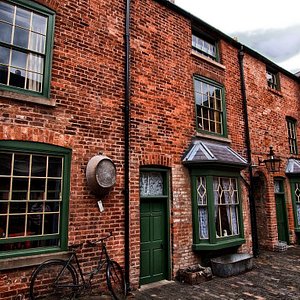
JEWELLERY QUARTER: All You Need to Know BEFORE You Go (with Photos)
- (0.03 mi) Wanderlust luxury apartment
- (0.04 mi) Pluxa Mint Bliss*****Free WIFI/Free Parking
- (0.09 mi) Frederick Street Townhouse
- (0.14 mi) UR STAY Serviced Apartments Birmingham
- (0.18 mi) Bloc Hotel Birmingham
- (0.01 mi) Urban Cafe - Bar - Kitchen
- (0.02 mi) The Moody Cow
- (0.02 mi) Pizza Quarter
- (0.03 mi) The Rose Villa Tavern
- (0.03 mi) Rose Villa Pub
- (0.02 mi) Diamond Dealer Direct
- (0.02 mi) Top Jewellery
- (0.02 mi) Affinity & Co. - Welded Jewellery Birmingham
- (0.04 mi) Warstone Jewellers
- (0.12 mi) Classic Diamonds
Discover the Jewellery Quarter on the go with the Discover JQ App

Explore the JQ & Learn More
Start exploring.
The Jewellery Quarter is steeped in heritage and teaming with both traditional and modern independent businesses. Situated only a short 20 min walk from Birmingham City Centre this unique neighbourhood has a village atmosphere and offers the chance to explore Birmingham's history, learn a new skill, and enjoy award-winning cafes and restaurants. Plan your visit today with our resources below outlining visitor attractions, tours, downloadable content and more.
Historical Background
Visitor attractions, guided tours, master a new skill, jq heritage trail, downloadable content.
Gold and silversmiths have been working in this part of Birmingham for more than 200 years from the late 1700’s onwards. The expertise in jewellery grew out of the “toy” trade – buttons, buckles and other small metal objects. Each specialist skill or process was dependent on its neighbours to complete the finished product. The industry reached its peak in the early 1900’s with approximately 70,000 people employed locally. For most of its history the Jewellery Quarter was a closed community of wholesalers. There were no jewellery shops for customers until the economic downturn of the 1970’s which prompted manufacturers to sell directly to consumers.
In the last 10 years the area has undergone a radical transformation as more and more creative studios have made use of vacant properties. Independent businesses have moved in including stylists, cafes and restaurants to serve the local office workers and residents who are growing in population.
The Jewellery Quarter is home to many visitor attractions including museums, galleries and community hubs. Browse their websites to find out about the latest exhibitions or upcoming events.
JQ Explorer Pass - Combine your visit to The Museum of the Jewellery Quarter, The Coffin Works and The Pen Museum and get up to 15% off entry with the JQ Explorer Pass.
Ask for details at reception when purchasing your ticket.
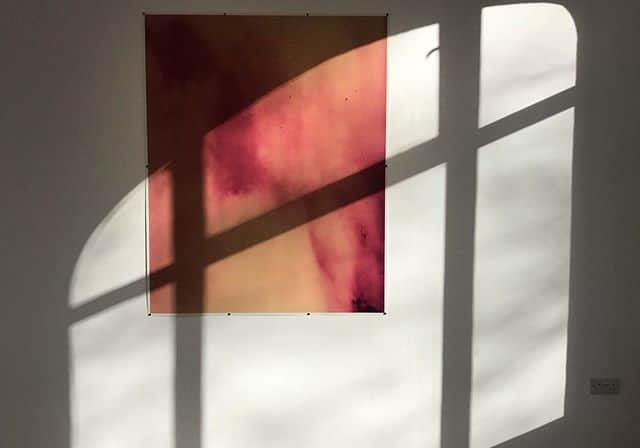
Argentea Gallery
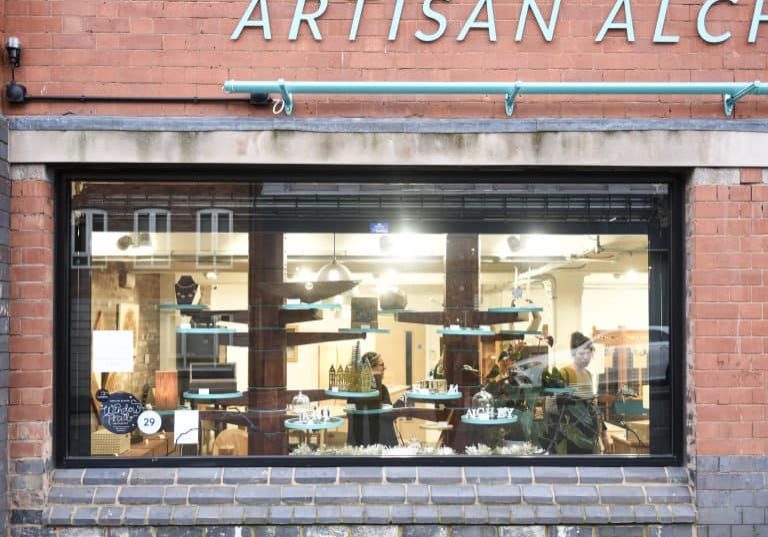
Artisan Alchemy
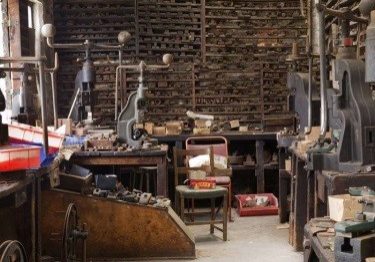
J.W. Evans Silver Factory
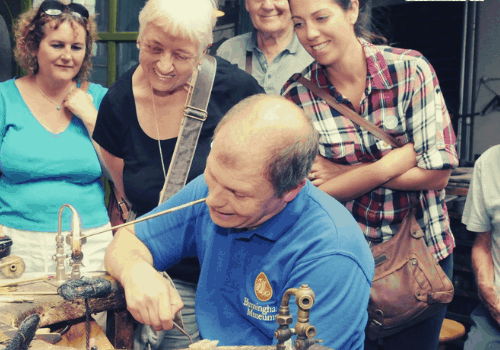
Museum of the Jewellery Quarter
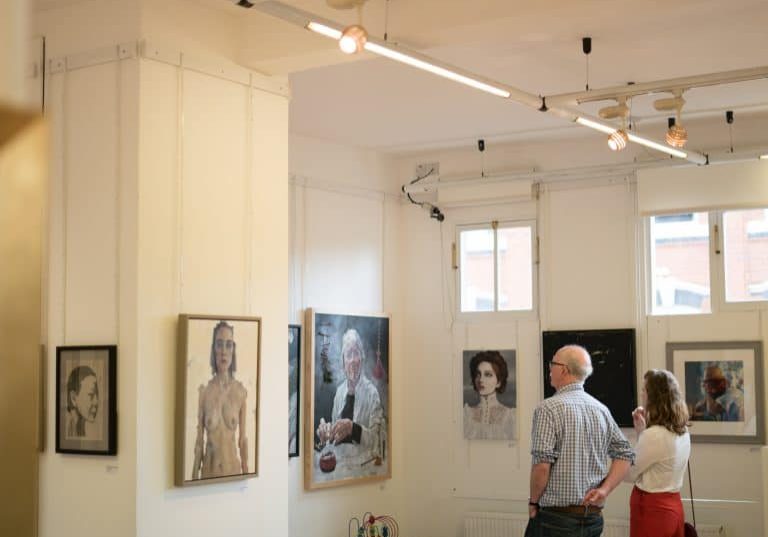
Royal Birmingham Society of Arts
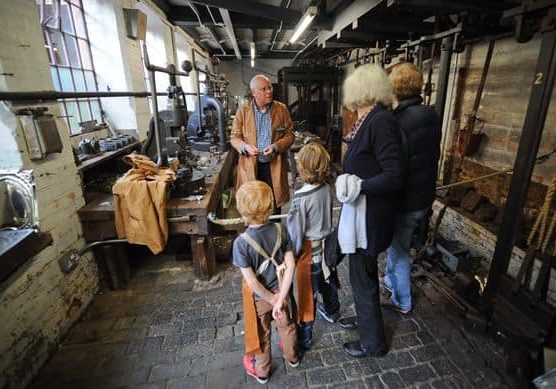
The Coffin Works
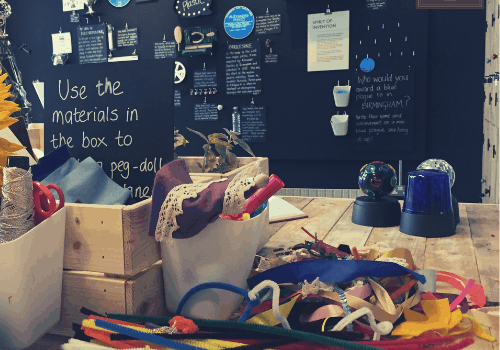
The Hive JQ
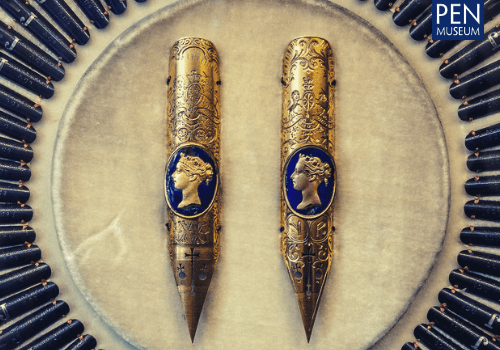
The Pen Museum
Delve deeper with a guided tour! There are tours of the area throughout the year, many of which are themed or focused on a specific aspect of the Jewellery Quarter’s history. Browse our What’s On webpage for upcoming dates or check with the local organisations below who run regular events.
Birmingham Walking Tours
Birmingham museums trust, friends of key hill and warstone lane cemeteries, jewellery quarter research trust, jq townscape heritage project, jq cemeteries project.
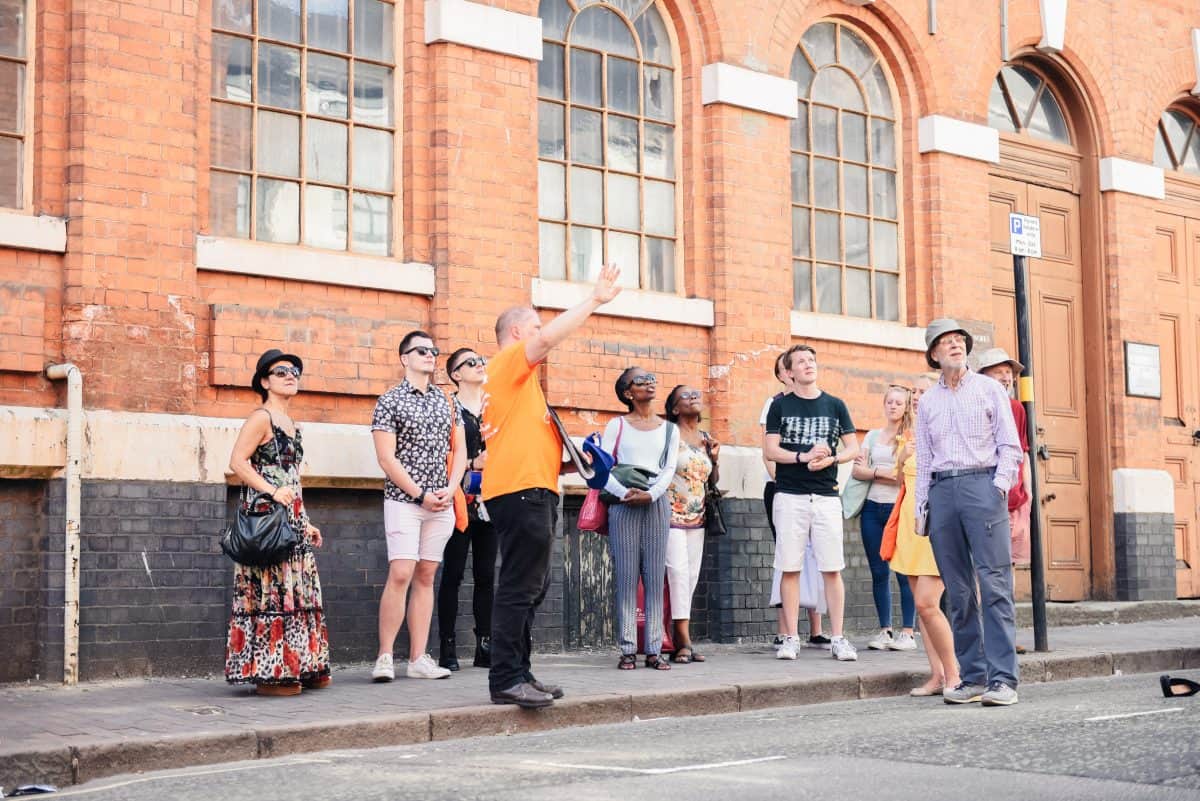
Master a New Skill
From artisan chocolates to jewellery making and hen-do craft evenings, many local makers offer opportunities for you to learn and develop your creative skills. See our What’s On webpage for upcoming dates or explore classes from some of the regulars below.

No Peg Studio

The Crafts Collective

The Quarterworkshop

With over 200 listed buildings, including a Georgian church and Victorian Cemeteries, much of the Jewellery Quarter’s heritage can be explored on foot. The JQ Heritage Trail contains information on 18 sites of interest across the area for you to explore at your leisure. Don’t’ forget to stop for a bite to eat at one of the many cafes or pubs along the way.
Explore our free pdf guides to local venues including shopping, eating & drinking. Produced by the JQBID and updated annually.
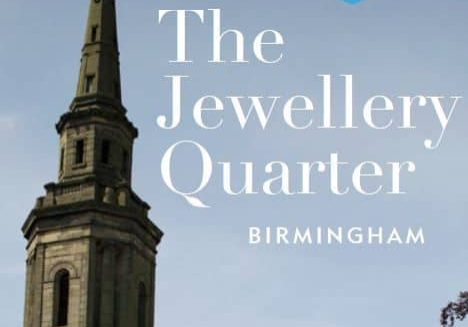
JQ Visitor Guide
Our guide to planning your trip with attractions, accommodation and transportation info.
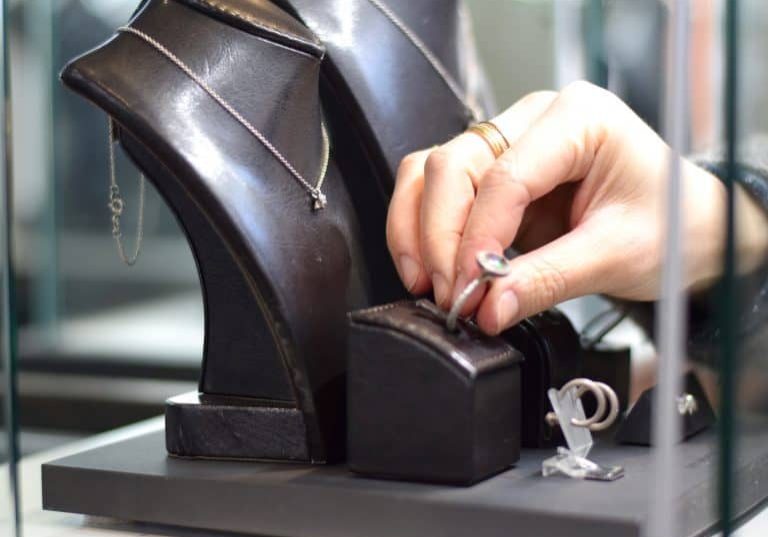
Shopping Guide
Discover local makers and independent businesses from jewellers to florists and barbers.
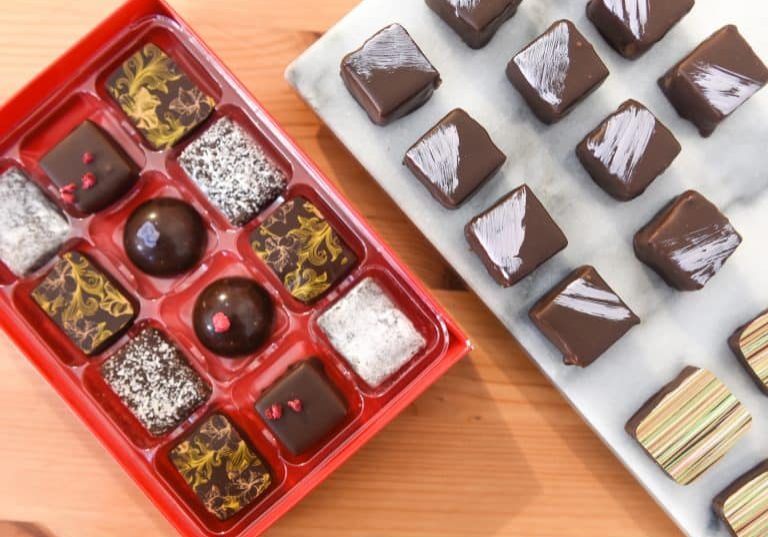
Food & Drink Guide
Feeling peckish or fancy a drink? Our guide to JQ bars, cafes and restaurants.
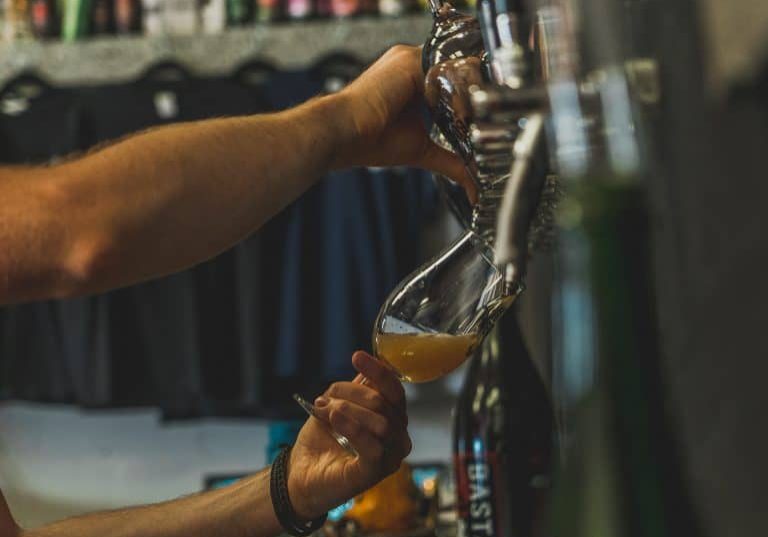
A hub for microbreweries and independent pubs, explore further with the JQ Ale Trail.

DIAMONDS that have a RING to them...
The jewellery quarter.
The Birmingham Jewellery Quarter is Birmingham’s Historic and Vibrant Gem. With 100’s of jewellery retailers and designers it is the UK’s centre for Jewellery. Within the Jewellery Quarter of Birmingham there’s more than just jewellery, you’ll also find a great choice of some of Birmingham’s best Art Galleries, Museums, Restaurants and Bars.
All in all, a trip to the quarter is a knowledgeable and enjoyable family day out and a vibrant place to work, live and play. The heart of the Jewellery Quarter is currently undergoing a massive refurbishment in Association with the Jewellery Quarter Regeneration Partnership and soon the area will be comparable to any other famous Square in the world. Do plan a visit to enjoy the Heart of Birmingham. Arrange a personalised tour via www.birmingham-tours.co.uk/birmingham-walking-tours/jewellery-quarter-walk/

- Birmingham Assay Office
- Diamond Engagement Rings
- Diamond Jewellery
- Miscellaneous Jewellery
- Jewellery Related Products
Food, Drink And Entertainment

- Restaurants
- Bars & Cafes
- Art Galleries
- School of Jewellery
Miscellaneous Lifestyle

- Hair and Beauty
- Banks/Post Office

- Wedding Rings
- Bridal Accessories
- Photography

For over 200 years Birmingham’s Jewellery Quarter has been the home of some of the worlds most highly skilled goldsmiths and jewellery makers.
The advent of shops opening to the public is a recent phenomenon, with the majority of retail outlets springing up since the 1970’s. And now the area is widely known as a place for both the trade and public to browse and buy the finest products at the keenest prices. Tradesmen worked from home, or in small workshops, and on the whole specialised in a particular craft. Many of these specialist craft and services complimented each other, strengthening the sense of community in the area and fostering a national and international respect for the industry in the area.
The Best Jewellery Shops Birmingham

The Best Jewellery Shops at The Jewellery Quarter in Birmingham The Jewellery Quarter in Birmingham offers a magnificent variety of some of the most popular jewellery shops in Birmingham. Birmingham’s jewellery quarter is the home to some of the most gifted and experienced jewelers in the UK who can provide their customers with exceptional jewellery pieces and services.
The Finest Jewellery Shops
The Jewellery Quarter in Birmingham has been established for over 200 years and provides a variety of popular jewellery shops. The Jewellery Quarter Birmingham is now widely recognised as the place to come for the finest jewellery shops in Birmingham. So if you’re looking to visit the best outlet for jewelers in the UK, you should definitely come to The Jewellery Quarter in Birmingham.
Jewellery Services
Whether you are looking to purchase a stunning jewellery piece for that special person in your life, repair an old watch or bracelet, have a jewellery insurance evaluation or are looking for certified diamonds, you should definitely visit the best jewelers in the UK at The Birmingham Jewellery Quarter.
Jewellery Shops and More
You can experience jewellery shops that are deep in culture and history and browse jewellery pieces from some of the most talented jewelers in the industry. As well as visiting some of the most popular jewelers in the UK to take a look at their range of diamond engagement rings , wedding rings, watches, earrings and so much more, you also have the choice of retail shops, pubs, hairdressers, cafes and restaurants – so you can shop until you drop, have a makeover, a bite to eat and refreshing drink.
Subscribe to our newsletter and be one of the first to look at new designs development and news in the Quarter
- Bars & Clubs
- Restaurants
- Cafes & Coffee Shops
- Hotels & Hostels
- Museums & Attractions
- Add Listing

Discover the JQ
Let's discover the best places to eat, drink, and shop in the Jewellery Quarter
Just looking around? Let us suggest you something exciting

Latest Listings

Creative Retail Limited
Passionate about property; we provide a modern, professional, and dynamic service to our clients.

Affinity & Co – Permanent Jewellery
Birmingham-based welded jewellery studio, supplying you with permanent/welded bracelets, anklets and

Masonic Jewellery
Dot Alt Events
From helping you get your flyers designed and printed to full event management, we are here for you.

Intelligent Business Support In Birmingham's Jewellery Quarter

Vermillion Films
Films made with Insight and Artistry

Gingermegs Vintage clothing store
A lover of all things vintage, Virginia “Gingermegs” finds key fashion pieces to help you put togeth

J W Evans Silver Factory
Come and see the lost industrial world of J. W. Evans Silver Factory, one of the most complete survi

The Hive Cafe and Bakery
Formally a jewellery manufactory, today you can eat at an award-winning vegetarian organic café, tak
Places of the Jewellery Quarter
PUBS & CLUBS
RESTAURANTS
HOTELS & HOSTELS
Claim your listing!

If you’re a Jewellery Quarter business, claim your listing by either dropping us an email or filling in the online form.
Latest articles

Kate Smith Jewellery
- Karin de Figueiredo
- October 27, 2023

Nick Bayliss Architectural Glass
- September 15, 2023

Take part in Slow Cooked Stories
- Steve Lovell
- February 2, 2023
What makes 'Discover Worcestershire' different
Over the last few years we have supported countless businesses, destinations and the community. We want to help this amazing county and help it grow. There are so many amazing people within Worcestershire all with their own stories and we want to make them heard.

Friends & Sponsors

Enter details to see availability and prices

Guide to Jewellery Quarter
Few places in the country can rival birmingham’s jewellery quarter for such a rich heritage and a future as bright as the precious metals being polished at its many workshops and factories.
Birmingham’s Jewellery Quarter is a pleasant 20-minute stroll from Staying Cool at Rotunda and walking to the historic Quarter makes for a lovely afternoon or evening. Just follow our walking route and you’ll enjoy eye-catching architecture, pretty arcades and chilled refreshments to keep you going!
From Staying Cool, turn left on to New Street and follow Birmingham’s central thoroughfare, crossing Corporation Street, until you reach the wonderful Piccadilly Arcade on your left. Pop in to the arcade for a coffee from Faculty and look up above you for wonderful art by Paul Maxfield.
After you’ve collected your take-out coffee head back out to New Street and over to Bennetts Hill. Bennetts Hill is home to a wide selection of bars and restaurants for another refreshment (all this walking is thirsty work!)
At the top of Bennetts Hill you’ll pass another Brummie skyscraper (waves!) – the new 103 Colmore Row tower – as you cross Colmore Row to walk along Newhall Street.
Newhall Street takes you to the heart of the Jewellery Quarter and is dotted with Brum history, from Matthew Boulton’s original Assay Office , now a thriving co-working space , to the former Elkington and Company building.
When you reach the beautiful Queens Arms , turn right on to Charlotte Street and after passing the RBSA Gallery you’ll see one of the prettiest spaces in Birmingham – St Paul’s Square – where you can stop and relax among the trees or enjoy its numerous coffee shops, restaurants and more, including Staying Cool favourite, 40 St Pauls .
If you’re looking for Jewellery Quarter workshops, gift stores, the Jewellery Quarter station , Chamberlain Memorial Clock , Pen Museum or any number of fab indie bars and restaurants, just follow Caroline Street at the top of St Paul’s Square to Warstone Lane and Vyse Street. It’s here you can find a unique piece of jewellery or soak up Birmingham’s skilled manufacturing history.
Jewellery Quarter History
This world-famous urban village has been described as a national treasure by English Heritage. Indeed, Birmingham’s Jewellery Quarter was known as the workshop of the world and toy shop of Europe when in the late 18th to early 19th centuries skilled craftsmen began moving their small workshops around beautiful St Paul’s Square.
Independent family businesses worked alongside each other to craft every stage of the jewellery manufacturing process. As a result, the Jewellery Quarter became Europe’s largest concentration of businesses involved in the trade. It still produces 40% of all the jewellery made in the UK today.
This is the place to go for the best choice of engagement and wedding rings in the country. (We have produced a guide to the perfect romantic weekend away if you’re interested…)

Assay Office, Pens… and Literacy
The Jewellery Quarter is also home to the world’s largest Assay Office, which hallmarks around 12 million items of jewellery a year. The Assay Office was founded by an Act of Parliament in 1773 when the silversmiths of Birmingham, led by pioneering industrialist Matthew Boulton, lobbied Parliament for its establishment.
The Jewellery Quarter is a district that can lay claim to have helped spread the written word and improve literacy around the world, as skilled makers produced more than 20 million pen nibs every week in the 1870s. Astaggering achievement now recognised at the Pen Museum at the Argent Centre on Frederick Street.
It’s located in a former pen factory, built in 1863, where visitors experience writing with feather quills, reeds and steel nibs and can also make their own nib using traditional methods.
Home to Independent Makers
For most of its history, the Jewellery Quarter was a manufacturing hub only. There were no jewellery shops until the 1970s when the recession forced city craftspeople to open their doors to visiting customers. Soon, other retailers moved into the area and old buildings were restored rather than pulled down to support these changes.

The area continues to undergo sensitive regeneration to reflect changing times and many of the former factory buildings have been taken over by a mix of independent retailers, coffee shops, bars, restaurants and creative workshops or turned into quirky residential apartments. Read more in our Guide to Birmingham Independents .
Unique Architecture
The Jewellery Quarter now has one of the highest concentrations of listed buildings in the UK, at over 200 listed structures in a square kilometre.
At the heart of the Quarter is the Chamberlain Clock at the junction between Warstone Lane, Vyse Street and Frederick Street.
Joseph Chamberlain is responsible for the fast-paced modernisation of Birmingham during his time as Mayor between 1873- 76.
First unveiled in 1903, the Clock commemorates Chamberlain’s visit to South Africa following the end of the Boer War.
A recent £150,000 restoration of the clock, which means it now chimes on the hour, connects visitors more with the local area and background on Chamberlain.

Places to visit in the Jewellery Quarter
On Fleet Street you will find one of Birmingham’s more unusual attractions – The Coffin Works , home of Newman Brothers Museum.
This is a unique museum about coffin making, with tours and stories of the funerals of famous people in history.
In 2014 the grade II* listed building, built in 1894, was taken off Historic England’s ‘Buildings at Risk Register’ after a successful 15-year campaign to save it.

At 75-79 Vyse Street, The Museum of the Jewellery Quarter is one of the nine museums run by Birmingham Museums Trust. It is currently closed for restoration work and roof repairs – we’ll keep you updated for its reopening.
Among the museum’s many fascinating attractions is the Smith & Pepper workshops. When the proprietors of the Smith & Pepper jewellery manufacturing firm retired in 1981 they simply ceased trading and locked the door, unaware they would be leaving a time capsule for future generations.
You can now explore this and watch demonstrations at the jewellers’ bench of the traditional skills, and discover what it was like to work there. You can also pop next door to Grain and Glass for a dram afterwards.

If you’re interested in the work of local artists, the Royal Birmingham Society of Artists at Brook Street, near St Paul’s Square, is one of the oldest art societies in the UK and is made up of artists who are elected to be RBSA Members, Associates and Honorary Members
The RBSA Gallery Shop features contemporary craft by designer-makers based in the Midlands and beyond.
PLACES TO EAT AND DRINK IN THE JEWELLERY QUARTER
40 st pauls, st paul’s square.
Sitting on the edge of stunning St Paul’s Square, 40 St Pauls was crowned the world’s ‘best gin bar’ in 2019. Over 140 gins in an intimate setting with just 24 seats. Booking is highly recommended.

Restaurant Folium, Caroline Street
Opened in November 2017, Restaurant Folium is a modern British restaurant, situated just off St Paul’s Square, on Caroline Street.
With a menu featuring ingredients obtained that day, Restaurant Folium brings an innovative and exciting food style to the Jewellery Quarter.

Urban Café Bar & Kitchen, Warstone Lane
Part of the Big Peg building on Warstone Lane, Urban Café has floor-to-ceiling windows for JQ people watching, fantastic coffees and ‘Birmingham’s best bottomless brunch’. If you’re visiting for a bit of work, you can rely on decent WiFi.
The Wilderness, Warstone Lane
Described as rock-and-roll fine dining, The Wilderness, led by chef Alex Claridge, is irreverent, playful and always creative. A long-term friend of Staying Cool with food collaborations that wow guests, The Wilderness is Birmingham dining at its most unique.

Hive Café & Bakery, Vittoria Street
Managed by Ruskin Mill Trust, The Hive, on Vittoria Street, is a Visit England gold award-winning café and training bakery that provides valuable work experience and training opportunities to students at Ruskin Mill Trust’s Argent College.
It offers meals, coffee, cakes and bread to visitors to the area as well as the growing residential community within the Quarter.
Opheem, Summer Row
Brummies take pride in those chefs that hold Michelin stars and chef-owner Aktar Islam has, in the words of Michelin, ‘created something quite unique and his pride in having his name above the door is palpable’.
Opheem is a modern Indian restaurant that makes a statement with its food, presentation, service and décor. This is genuine special occasion stuff.
The Aktar @ Home curry boxes , perfect for a night (or two, or three) at Staying Cool, offer a fantastic value-packed dining experience.

1000 Trades, Frederick Street
This is a 19 th century building built as a jewellery workshop and then badge factory. Expect the best craft beers, natural wines, creative food menus to the backdrop of artworks of local artists. 1000 Trades has space available for community and private events.

Damascena, Warstone Lane
Fresh falafel straight from the fryer? Homemade hummus still warm from the blender? Damascena’s magnificent Syrian-inspired menu offers this and more. The Damascena Breakfast Meze is fast-becoming the stuff of Birmingham legend.

Saint Kitchen, St Paul’s Square
It’s all about Location, Location, Location, for Saint Kitchen, an independent café in the heart of the Jewellery Quarter, directly opposite St Paul’s Square. Dine and drink inside or pick-up a takeout to sit in the Square and soak up the beautiful surroundings.

If you enjoyed our Guide to the Jewellery Quarter, check out our Guide to Digbeth too!
This site uses cookies. Learn more.
1 Welcome to the Jewellery Quarter
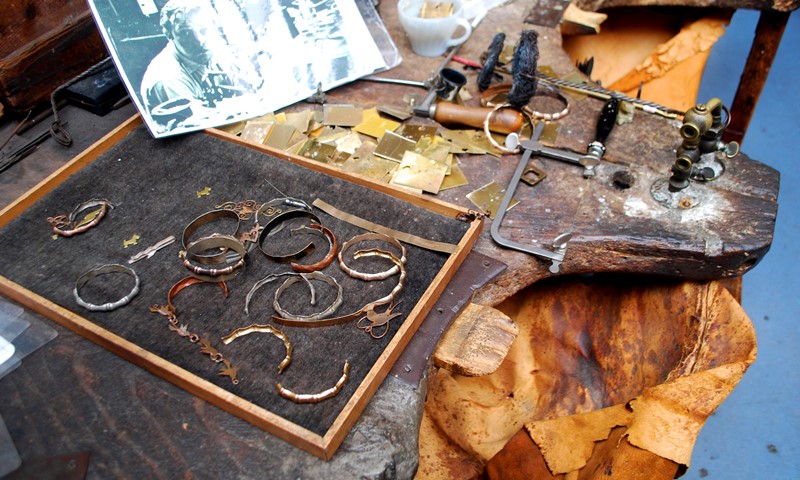
Birmingham had been a small manufacturing centre for many centuries, but the Industrial Revolution led to great expansion. The town became the centre for metal-working in the West Midlands.
In many ways this is surprising because there was never any coal or iron ore in the city. These raw materials all had to be brought from the Black Country - the area around Dudley, Walsall and Wolverhampton. Nevertheless, the better road communications which Birmingham enjoyed helped it to become dominant from an early date.
This walk charts the changing fortunes of the Jewellery Quarter from when the area was first being developed, through world wars and the threat of redevelopment to the present day.
Originally little-known even to local people, the Quarter is now a major tourist attraction, with many people visiting the local museums, and many more attracted here to buy jewellery. But there is so much more to the Quarter than just jewellery.
We will see how right from when it first developed this was an area where all types of skilled metal-working were carried out. We shall see how in recent years an even wider range of businesses have become established here and how the success of the area threatens its future by diluting the manufacturing basis of the Quarter.
Most of all this is a chance to walk around a traditional manufacturing district, where skilled workers can still be seen plying their trade.
Image: A desk in the Museum of the Jewellery Quarter © Martin Haslett RGS-IBG Discovering Britain
Stay in St Paul’s Square. If you haven’t already, make your way to the church in the middle. Stop in front of the church spire.
2 Expanding suburbs
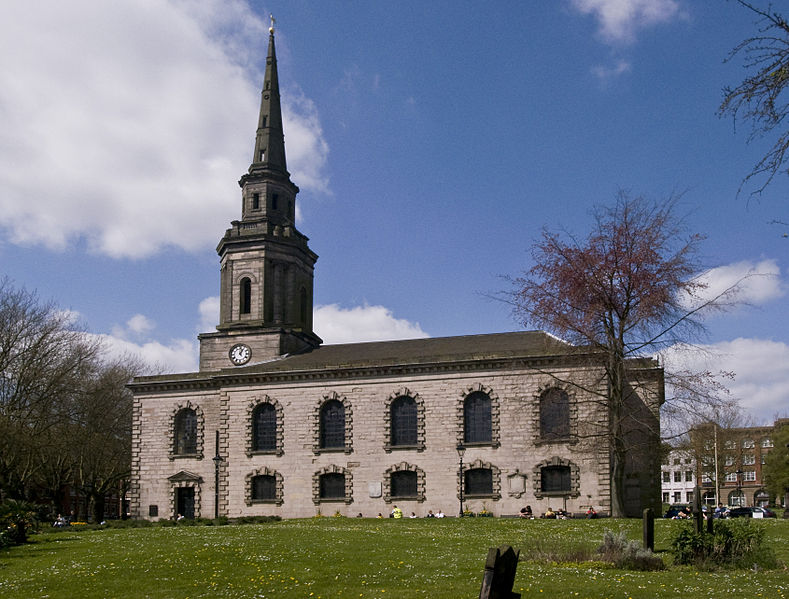
By the late 18th century Birmingham city centre, to our east, was becoming a crowded industrial area full of small workshops. It was not a pleasant place for successful entrepreneurs to live.
For this reason the local landowners, the Colmore family, developed fashionable new residential areas to the west of the city. It was common to find high-class suburbs to the south and west of a city at this time - the prevailing south-westerly winds meant that the air was cleaner here.
Built between 1777 and 1779, St Paul’s Square is Birmingham’s only remaining Georgian square. The fashionable Georgian houses allowed prosperous people to escape from the noise and dirt of the city centre and enjoy a better lifestyle.
Having the church in the centre of the square makes a grand piece of town planning. The church may be open – if so, do have a look inside.
As we continue on our walk, it is important to remember that the small-scale metal working of the Jewellery Quarter is not typical of Birmingham’s heavier metal industries. Birmingham’s industrial growth was built on the manufacturing of metal, usually of objects much bigger than jewellery.
Look out for cast iron letter boxes on many old buildings and the cast iron name plates for the roads, in a design unique to Birmingham.
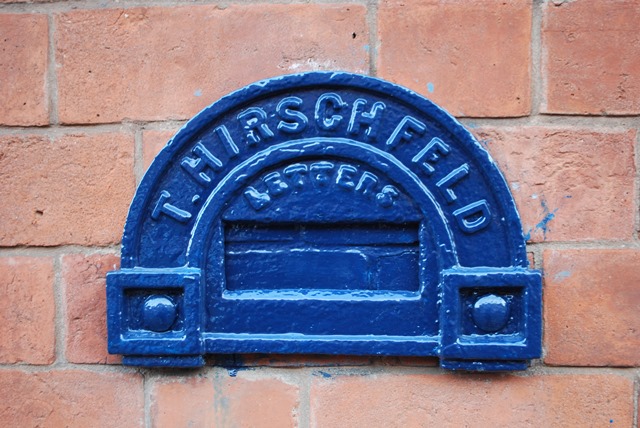
St Paul’s Church © Oosoom, Wikimedia Commons (CCL)
Cast iron letter box © Martin Haslett RGS-IBG Discovering Britain
With the church spire behind you, turn left and follow the path out of the Square. Turn left at the road and continue ahead onto Mary Ann Street. At the end, use the pedestrian crossing and turn right at the tunnel to follow the high brick wall of Livery Street.
Continue with the railway arches on your left until you reach a canal. Go through the pointed pedestrian arch and take the steps down to the towpath. At the bottom of the steps turn hard right and go under a bridge. Continue along towpath with the canal on your left. Stop before the next bridge.
3 A watery birth

The Birmingham and Fazeley Canal opened in 1789. Having a canal so close to new high-class housing is rather surprising but in an un-planned age different landowners had varying ideas about how the area should develop.
The canal here was an important link in the national canal network. It also enabled this part of town to industrialise. This industrial development was completely in conflict with the houses we saw in St Paul’s Square.
As the area became more industrial, the prosperous residents escaped to the new suburbs being built to the south of Birmingham, mainly in Edgbaston. In their place, metal-working trades rapidly developed here.
With the plentiful supply of raw materials, Birmingham was becoming famous for metal goods. Jewellery was an important part of this expansion but by no means the only metal trade practised in late 18th century Birmingham. We will see examples of how many of these trades remain to this day.
Image: The Birmingham and Fazeley Canal © Martin Haslett RGS-IBG Discovering Britain
Go under the canalside bridge past a tall modern tower block. Go through the next tunnel and at end of it immediately turn right through a narrow gap in the wall. Go up a staircase to the road (Newhall Street?). Turn left, for a few steps and stop just before The Queens Arms pub .
4 Innovation
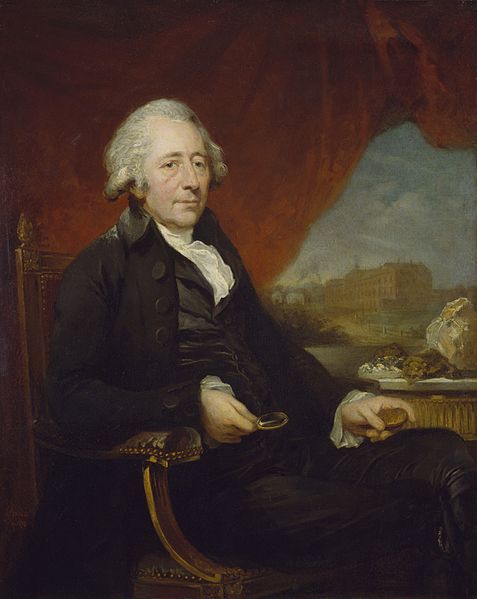
We have seen how good communications helped Birmingham to grow, but there is another very important reason for its development. There were several very influential and progressive businessmen in Birmingham who led the way in industrial innovation.
Foremost amongst them was Matthew Boulton, who set up his Soho Manufactory in 1766 in nearby Handsworth. He was the first person to recognize the benefits of bringing people together in factories to improve production techniques. Boulton worked with the Scottish engineer James Watt to harness the power of steam to improve industrial efficiency.
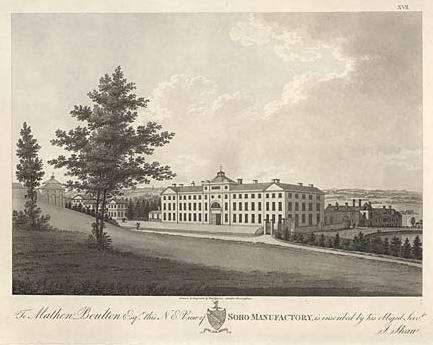
These innovations were such a step forward from water power that Matthew Boulton is seen as one of the pioneers of the Industrial Revolution. The Soho Manufactory is often quoted as the world’s first factory. It is Birmingham’s great loss that the building was demolished in Victorian times.
The building we are now standing outside is another landmark in the history of industrial innovation, in this case more closely connected with jewellery. It was here in the 1840s that George Elkington had his electro-plating works.
Using electricity to deposit a thin layer of silver on a base metal made products that could look like solid silver. One of Elkington’s employees was Alexander Parkes who went on to invent the world’s first plastic.
Portrait of Matthew Boulton (1792) Wikimedia Commons (CCL)
Engraving of the Soho Manufactury (c.1800) Wikimedia Commons (CCL)
With your back to Elkington’s works, look a little to your left across Newhall Street to the building with railings and an impressive columned porch under the royal coat of arms. Carefully cross the road and stop outside it.
5 Tried and tested!
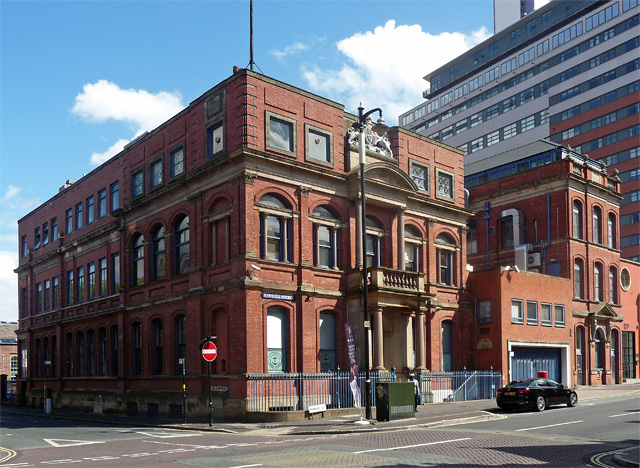
The history of hallmarking silver in England dates back to 1300 when a statute required that precious metals were tested and marked. Hallmarking is one of the oldest forms of consumer protection. It protects the customer from fraud and the manufacturer against dishonest competitors.
Silver made in Birmingham had to be hallmarked in Chester and this added greatly to costs. Not only was it a long way to Chester but the poor roads led to articles being damaged and the added danger of highwaymen.
Matthew Boulton could see a way round this problem. Joining together with manufacturers from Sheffield, he petitioned Parliament to establish a hallmarking office in Birmingham. The bill was passed in 1773 and both Birmingham and Sheffield opened offices.
Birmingham adopted the anchor as its mark, which it retains to this day. People often ask how this could be, so far from the sea but legend has it that the Birmingham and Sheffield supporters met in a pub called the Crown and Anchor. When they were successful, they decided to use these two images for their new offices
From these modest beginnings, the Birmingham Assay office is now the largest and busiest in the world.
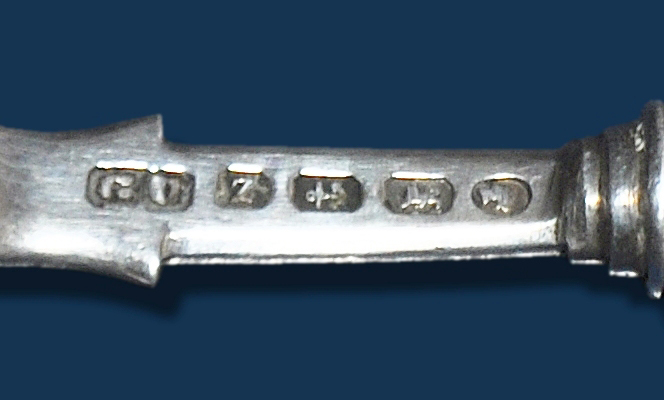
Birmingham Assay Office © Stephen Richards, geograph (CCL)
The anchor hallmark on a Birmingham-made silver spoon © Jojorei, Wikimedia Commons (CCL)
With the old Assay Office on your right, turn right into Charlotte Street. When you reach the corner of St Paul’s Square again, take the first left then first right around the Square (so that the church is on your right). Then turn left into Caroline Street, which eventually bends to the right. After the bend, stop on the right at the junction with Kenyon Street, outside a building marked ‘Pickering and Mayell’.
6 Going shopping
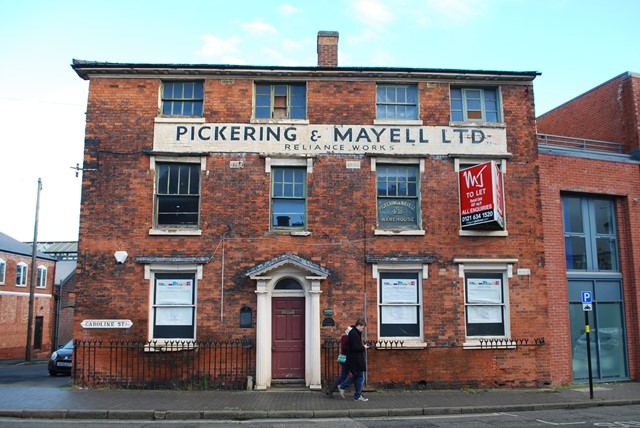
Although buildings in the Jewellery Quarter started as homes, many were converted into workshops as the various industries expanded. Many of the workshops that are still in use in the Jewellery Quarter are converted dwellings.
Sometimes the front was little altered, with ‘shopping’ being added to the rear. This ‘shopping’ is nothing to do with the retail trade - these were workshops, small-scale industrial buildings which were designed to maximize natural light to allow craftsmen to work.
Number 42 Caroline Street is a good example. It was originally built as two quite fine houses but the residential use of this area of the city was very short-lived. Very soon this pair of houses was converted to industrial use and occupied by a famous Birmingham silversmith. Later on Pickering and Mayell, who were jewellery case manufacturers, conducted their business from here.
You can see just from looking at the front that these were fine houses, with railings and decorative door cases and window detailing. These buildings are a good demonstration of how industrial uses eventually forced out the prosperous residents for whom these houses were originally built.
Image: The Pickering & Mayell building © Martin Haslett RGS-IBG Discovering Britain
Retrace your steps a little way and stop outside the modern red brick building that adjoins Pickering and Mayell. Look across the road at the building opposite, to the left of the car park.

7 Factory records
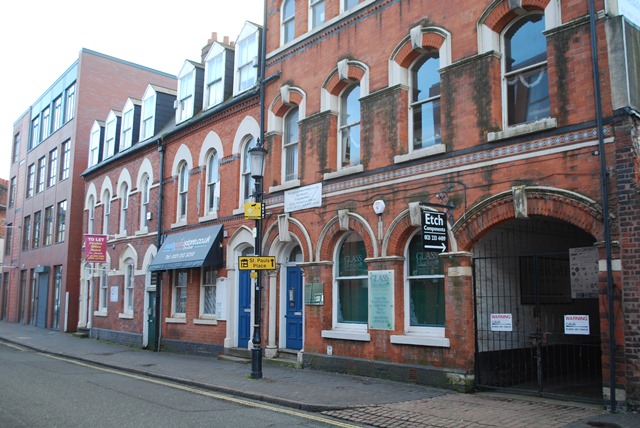
While many of the buildings in the Jewellery Quarter are converted houses, this is not true of all of them. 58-59 Caroline Street (the building with the large access arch) is a purpose-built manufactory, dating from the late 19th century. By this time the area had become largely industrial and landowners were building small factories.
The listing description for this building refers to workshops on the first floor and further workshops to the rear. A building of this design was probably better for the craftsmen to use than the converted house we saw at the previous stop.
The large arch to the right would have allowed a horse and cart to be loaded to the rear. Although this building was never a home, note the considerable care and expense that has been taken over the brick detailing and decoration on the front.
Look a little to the left at the buildings next door, 60-61 Caroline Street. Are these converted houses or purpose-built factories? It can be quite difficult to tell. In this case they are a pair of factories, built rather in the style of homes. Perhaps the over-large windows indicate that the maximum amount of light was needed to aid the craftsmen in their work.
Look out for more workshop/factories and converted houses as we continue.
Image: Purpose-built or converted house? © Martin Haslett RGS-IBG Discovering Britain
Return to the Pickering and Mayell building and carefully cross over to the other side of Caroline Street. Continue to the end of Caroline Street then turn left. Use the pedestrian crossing to enter the road opposite, Spencer Street. At a safe place, cross over and continue along the right hand pavement.
At the end of Spencer Street is a mini roundabout. Keep the roundabout on your left and cross over the junction with Hockley Street to continue along Spencer Street. At the end, carefully cross over at junction with Vyse Street. Continue ahead into Hylton Street for about 20 metres. Stop outside the large red brick building on your left with arched upper windows.
8 Top designers
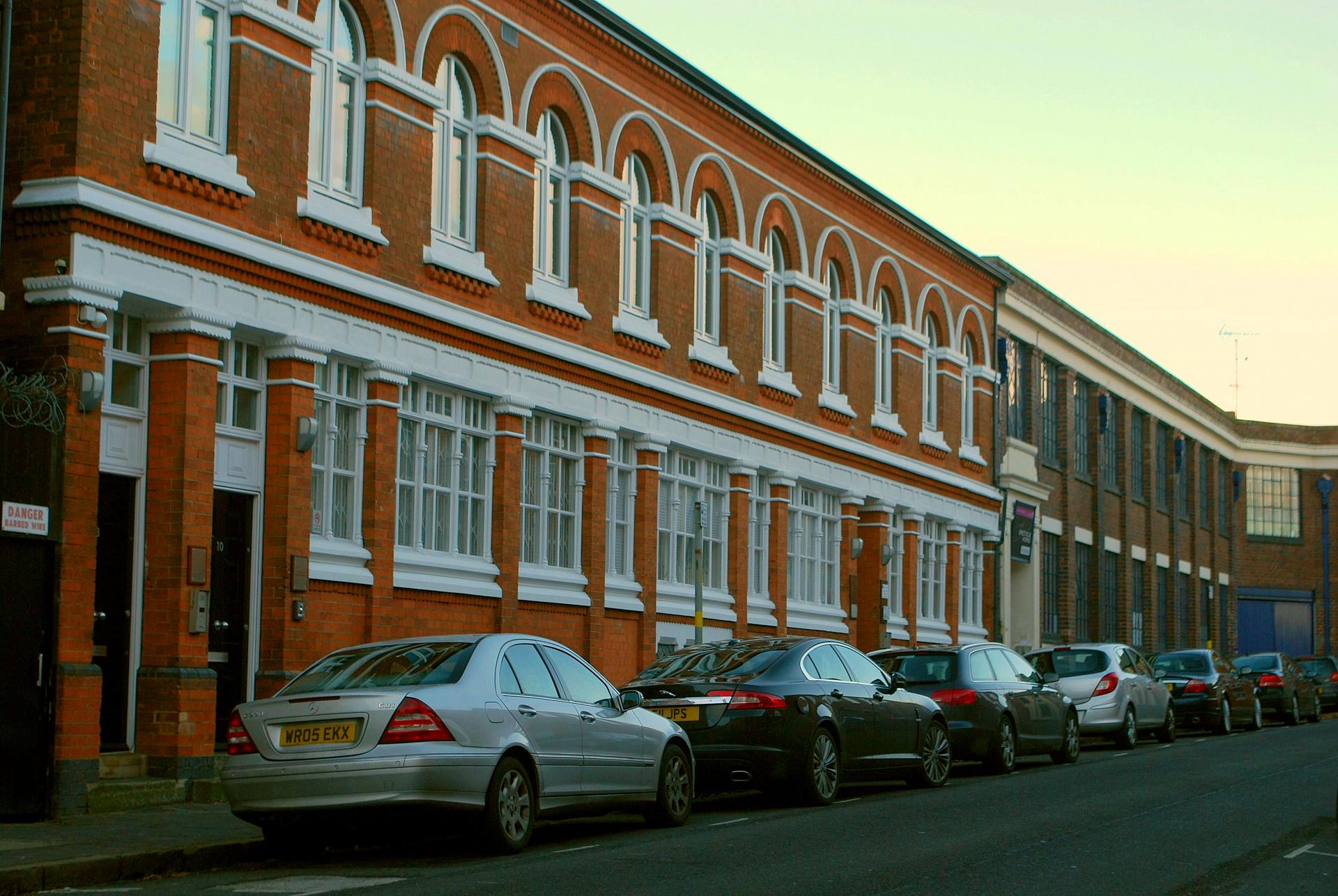
This grand building dates from about 1905 and its design makes it plain that this is not a converted house. Look at the high ground floor window sills and large first floor windows that make the best of the available light.
Look too at the elaborate cut bricks between the ground floor and first floor windows, and the use of painted stone to give the design more appeal. The grand doorways also emphasize the building’s importance.
This was a purpose-built jeweller’s workshop. It was occupied by WH Haseler Ltd, jewellers and silversmiths. Haselers produced a range of jewellery, silver and pewter designed by leading artists of the day. They went into partnership with Liberty’s, the London department store famous for its cutting edge design.
Such was their success that Haselers built an extension to the original building. You can see it if you look to the right of the original block, going round the corner of the street.
This was built in 1920 and we can see how styles had changed over these 15 years. Even though it is a more ‘modern’ building, it still reflects the confidence of a firm with a connection to the leading designers and retailers of the day.
Image: The former W H Haseler factory © Martin Haslett RGS-IBG Discovering Britain
Return to Vyse Street and turn left. After a short distance, cross over the road and stop outside the Jewellery Quarter Museum.
9 Traditional work place
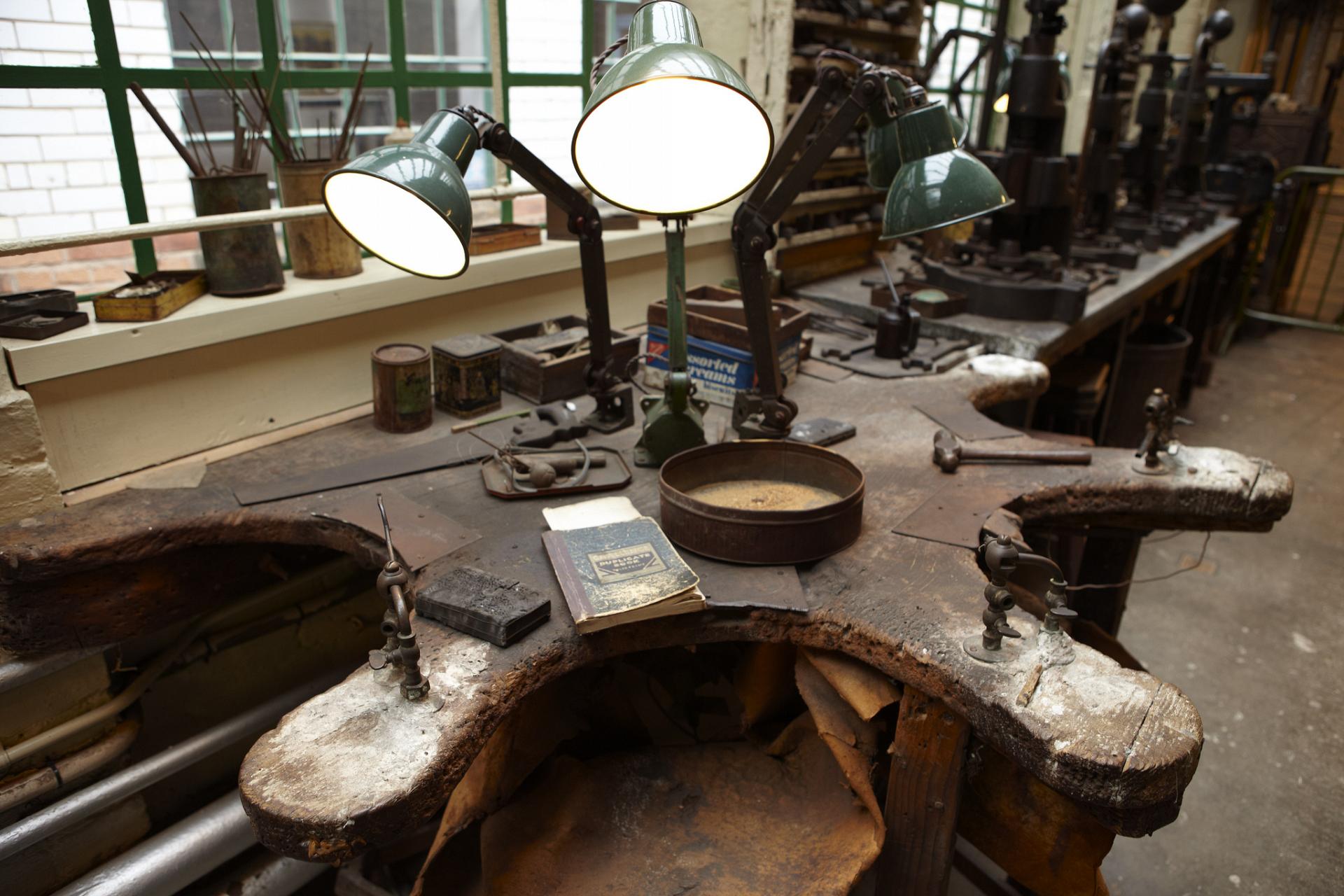
In the past few years there has been an increased recognition of the importance of our industrial heritage. People are interested in visiting places that bring to life the lives of working people, rather than just the stately homes of the rich and powerful.
In this way the Jewellery Quarter has become an important tourist asset to the city. Even today you will struggle to find heritage sites which focus on the story of small-scale manufacturing, as we find here.
The Victoria and Albert Museum in London has one of the world’s finest collections of jewellery, but rather less information on how it was made and the people who made it. This is where the Museum of the Jewellery Quarter comes to the fore.
Here you have the opportunity to walk into traditional jewellers’ workshops, with their original tools and workbenches. It’s well worth a visit - the staff can demonstrate the processes and machinery which have remained little changed for generations.
Image: Scene from the Museum of the Jewellery Quarter © Birmingham Museum and Art Gallery, Flickr (CCL)
With your back to the Museum, turn left and continue uphill along Vyse Street (crossing the end of Spencer Street again along the way). When you reach the traffic island outside Jewellery Quarter railway station, use it to cross over and stop outside the station.
10 Making connections
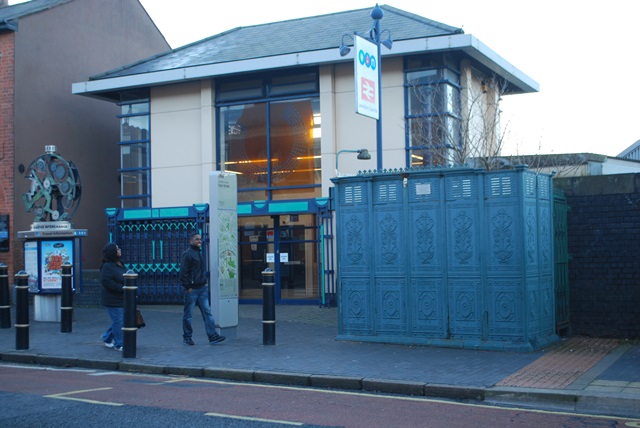
The increasing tourist interest in this area has led to improved transport services. The Jewellery Quarter railway station was opened in 1995, as part of the ‘Jewellery Line’ project. This was followed in 1999 by a new a tram service between Wolverhampton and Birmingham.
The Jewellery Quarter is an important employment area, not just for jewellery manufacture and sale but for a wide variety of other work. The combined train and tram link makes the area much more accessible and is another facet of its regeneration over the past few decades.
While we are here, look outside the station to see one of the original Birmingham pissoirs, a cast iron toilet originally found widely across the city, but, rarely elsewhere. This heavy cast iron structure was made in Glasgow, but it is not unlike the ‘heavier’ side of Birmingham metal manufacturing. It’s in sharp contrast with the very precise, highly skilled small-scale work of the Jewellery Quarter and its associated trades.
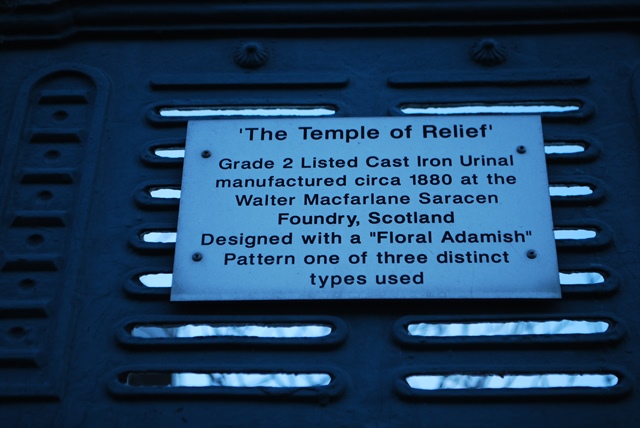
Images: Jewellery Quarter station and ‘The Temple of Relief’ © Martin Haslett RGS-IBG Discovering Britain
Continue along Vyse Street and take the first right into Pitsford Street. Continue to the end, past a large cemetery. At the junction with the dual carriageway, turn left. Stop outside the impressive brick and stone building, just past a newer building called ‘No.1 The Mint’.
11 Making a mint
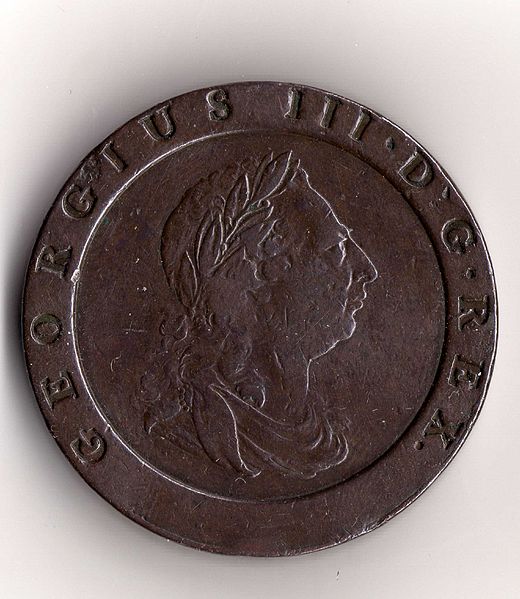
For this part of our story, we return to the great entrepreneur Matthew Boulton. At his nearby Soho Manufactory he perfected production processes that used steam power. In particular he developed presses. This production method harnesses the power of steam to ‘press’ out products using skillfully made dies.
Boulton experimented with machine-made tokens, which were much needed due to a shortage of coins. The Royal Mint still made coins using hand presses, a difficult and slow process. Eventually, Matthew Boulton was engaged to make the coins of the realm on his new steam presses.
The first of these were the famous ‘cartwheel’ pennies. Apart from speed, Boulton claimed that his presses produced coins which were much harder to counterfeit - a serious problem at that time. All of this took place a mile or so from here.
The connection with this building is that Ralph Heaton bought Matthew Boulton’s presses and continued to produce coins as the ‘Birmingham Mint.’ The company moved to this site in 1862. They won contracts to produce coins for all over the world, especially countries of the Empire.
The Birmingham Mint continued to prosper and became the largest private mint in the world. Even recently, they produced several million 1 and 2 Euro coins. Now though, production has ceased and only the front of the building has been for conversion to other uses.
Image: A Birmingham Mint ‘cartwheel’ penny (1797) © Smabs Sputzer, Flickr (CCL)
Continue along Icknield Street and take the first left, Carver Street. After a short distance turn left again to enter Warstone Lane. Continue along this road until you reach the junction at the end with a clock tower.
12 A man of his time
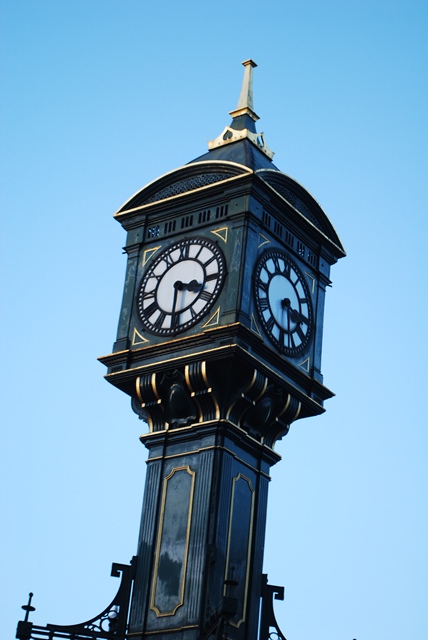
The clock at this road junction records Joseph Chamberlain. In the late 19th century Chamberlain was another innovator and the embodiment of Birmingham. From an early and successful career in manufacturing, he applied the lessons learned in business to local administration.
In 1873 he became Mayor of Birmingham and used his influence to transform the town and its services. He went on into national politics and served as Secretary of State for the Colonies. When the Boer War came to an end in 1902, Chamberlain toured South Africa the following year to promote reconciliation between the British and the Afrikaners.
This clock commemorates Chamberlain’s visit to South Africa. There are many other memories of the man in Birmingham, including Chamberlain Square in the city centre and ‘Old Joe’ the prominent clock tower at Birmingham University, an institution that he helped to found.
Before we move on, notice there are two branches of well-known banks at this crossroad. Banking services were very important to the expansion of business in Victorian times. Traders needed to send and receive money safely and a reliable place to keep it.
Although never a major financial centre, Birmingham gave England two of its major banks. Both Lloyds Bank and the former Midland Bank (now part of HSBC) were founded in Birmingham.
Image: Detail of Chamberlain Clock © Martin Haslett RGS-IBG Discovering Britain
Use the pedestrian crossings to pass the clock tower and reach the entrance to Barclays. Continue along the right side of Warstone Lane. Take the first right into Vittoria Street and then look for the Birmingham City University School of Jewellery on your right.
13 School setting
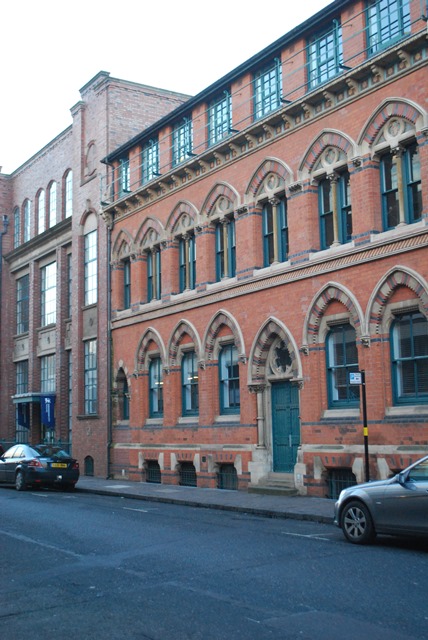
In 1889 a meeting of all the principal jewellers was held to discuss the establishment of a jewellery school. Although apprenticeships were available, it was considered that the jewellery trade would benefit if workers were to have a broader education.
By 1890 the building here in Vittoria Street, formerly a factory, was acquired and adapted as a jewellery school. It catered for 460 students, of both sexes. By 1912 it needed an extension, which is what you see to the left of the main building.
Students had to learn the technical aspects of their work, but there was also a strong emphasis on the artistic side of jewellery design. They were encouraged to draw from natural forms and use nature to inspire their designs.
Image: Part of the School of Jewellery building © Martin Haslett RGS-IBG Discovering Britain
Retrace your steps and return to Warstone Lane. Turn left and stop outside one of the jewellery shops.
14 Changing fashions
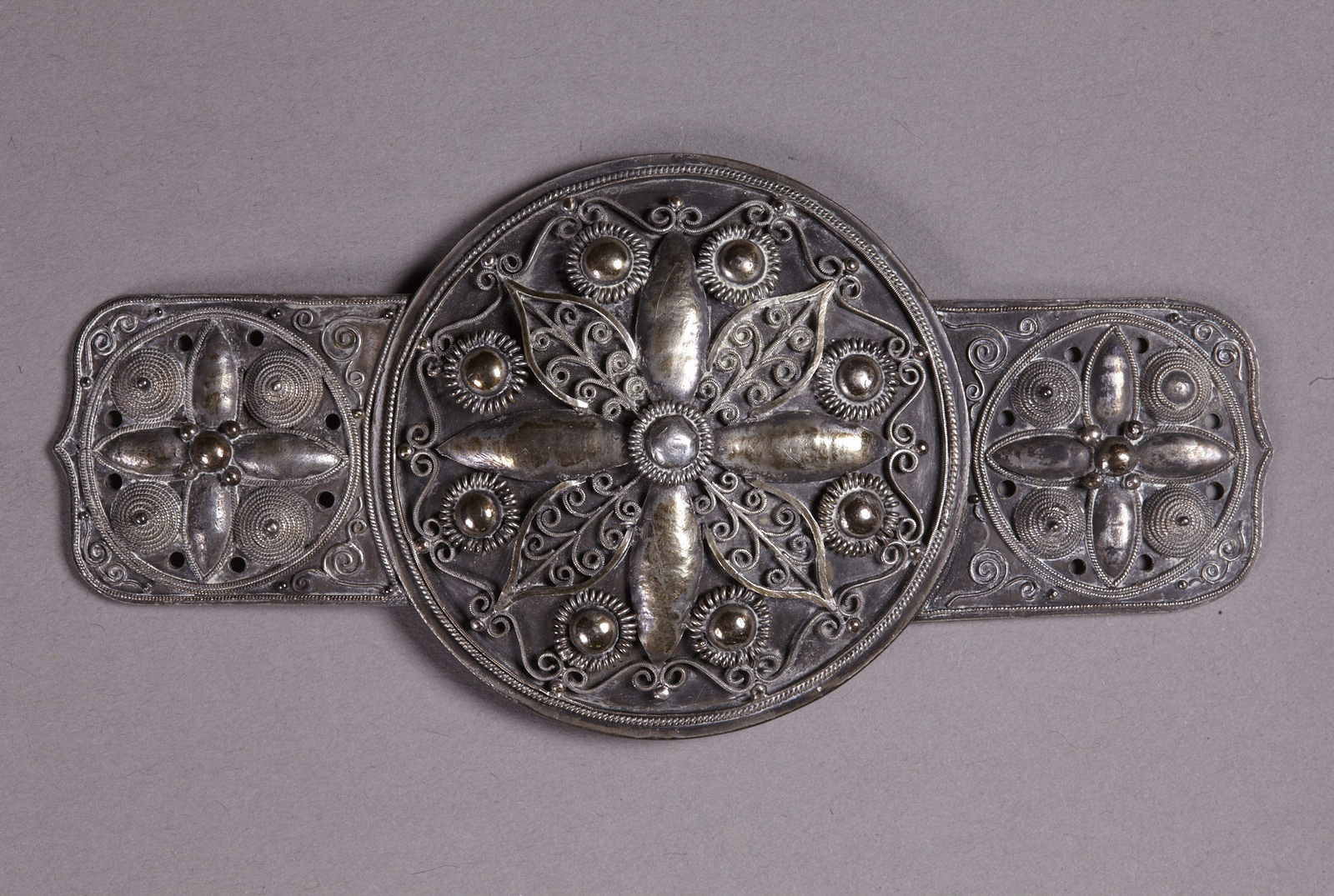
The Jewellery Quarter has seen both good and bad times - according to the economic health of the country and contemporary fashions. Expensive and showy jewellery goes in and out of fashion and these changes directly affect an area like this. At one stage Queen Victoria agreed to make a point of wearing Birmingham jewellery as an advertisement for the area.
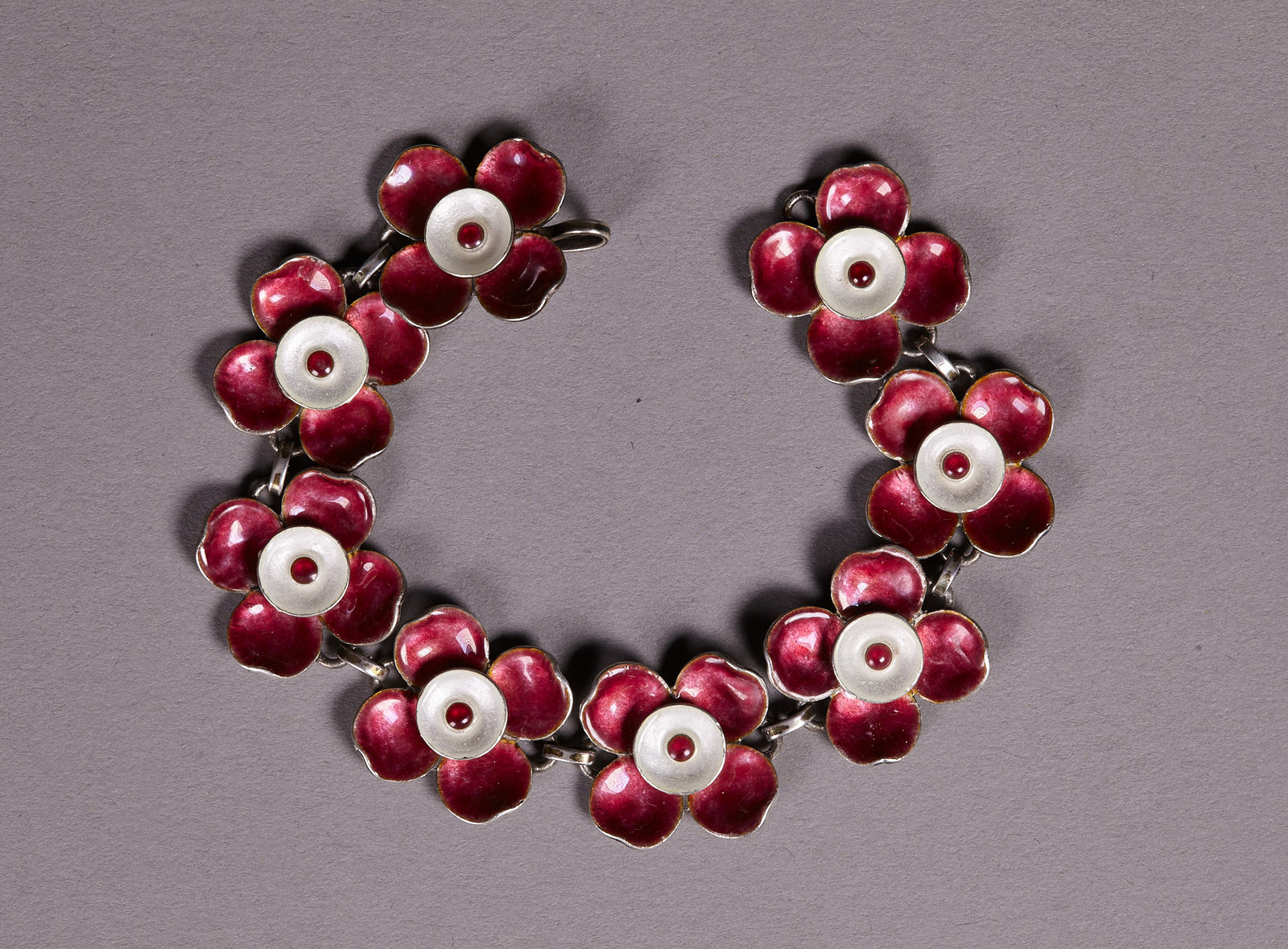
It was during one of the periodic downturns in the 1970s that local jewellery manufacturers hit on the idea of selling direct to the public. Small manufacturing premises sprouted shop fronts and it soon become known that a considerable bargain could be obtained here, rather than in city centre jewellers’ shops.
This change of approach was an important turning point in the history of the Jewellery Quarter. It brought the area to the attention of the public at large. Until then, many local people were unaware that Birmingham had a Jewellery Quarter - it wasn’t even shown on any road signs or maps.
Images: Examples of Birmingham-made jewellery 1910-1930 © Birmingham Museum and Art Gallery, Flickr (CCL)
Return to the end of Vittoria Street and look across the square at the large white tower block.
15 A square peg
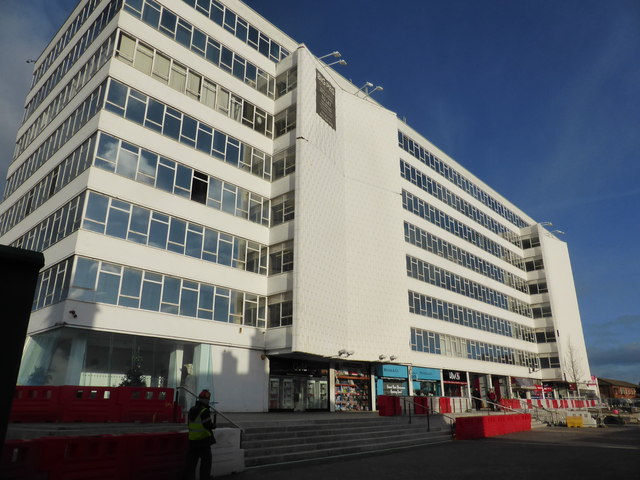
The large multi-storey building is ‘The Big Peg’ currently occupied by shops and offices. Its name refers to the traditional jewellers’ workbenches (known as pegs) that you may have seen at the Jewellery Quarter Museum. It was built in the early 1970s as a ‘flatted factory’ (a building divided into separate units), replacing a considerable number of old workshops.
The City Council had already built flatted factories in other parts of the city as part of its redevelopment schemes, so whilst this was new to the Jewellery Quarter, it was not a new concept. It did seem at this stage, in the early 1970s, that the whole of the Jewellery Quarter would be redeveloped in this way and the ‘magic’ of all the old workshops would be lost for ever.
Much redevelopment had already been carried out in the ‘Gun Quarter’ to the north east of here. Modern factories had replaced some of the old workshops, but the scheme here was not a success.
Many of the small businesses who had been removed from their old, cheap workshops could not afford the rents or commit to the tenancies that the council demanded and simply went out of business. Fortunately for the Jewellery Quarter this was also at a time when ideas about redevelopment were beginning to change.
After the great rush to redevelop bomb sites and slums after the war, the tide was turning, not only for old industrial areas but for housing too. Now that the worst of the slums had been replaced, repairing and regenerating existing areas was considered better than rebuilding them.
Problems were starting to become apparent in redeveloped housing areas, and The Big Peg was encountering similar problems in industrial redevelopment. The mid and late 1970s saw a complete change in opinions about redevelopment and attention became focussed on regeneration.
Image: The Big Peg © Chris Allen, geograph (CCL)
Return to the Chamberlain Clock and turn left into Frederick Street. Find a safe place to cross over and take the first right into Albion Street. Stop after about 50 metres, looking at the left side of the road.
16 A change of heart

We heard at the last stop how redevelopment slowly gave way to regeneration. Here in Albion Street we can see a good example of the results. During the 1970s the problems associated with redeveloped housing areas were becoming all too clear, with social problems developing in the high-rise blocks which replaced slum housing.
As we saw at the Big Peg, similar problems were seen in industrial redevelopment. It was also a time when attention was beginning to be focussed on the ‘inner city’, areas which were in need of increased investment. This was in contrast to previous years when population and industry had been siphoned-off into new towns, like Redditch and Telford.
Urban planners turned their attention to the inner cities and changes in legislation directed investment to these areas. ‘Industrial Improvement Areas’ were designated which allowed grants to be paid for the refurbishment of existing buildings. Then in 1980 the Jewellery Quarter was designated a conservation area.
Within 10 years there had been a complete turnaround in planning policy. We can see some of the results here in Albion Street. Old buildings have been renovated and care has been taken to return houses and workshops to their original appearance, with traditional windows and doors.
There is also another museum, J W Evans Silver Factory, at number 54. This is a chance to visit a silver factory where the traditional crafts of the Jewellery Quarter carried on until quite recently.
Image: J W Evans Silver Factory © Martin Haslett RGS-IBG Discovering Britain
Return to the junction with Frederick Street and turn left. After a short distance, you’ll see a redbrick building marked Thomas Fattorini Limited. Carefully cross the road and stop outside this building.
17 A wartime target
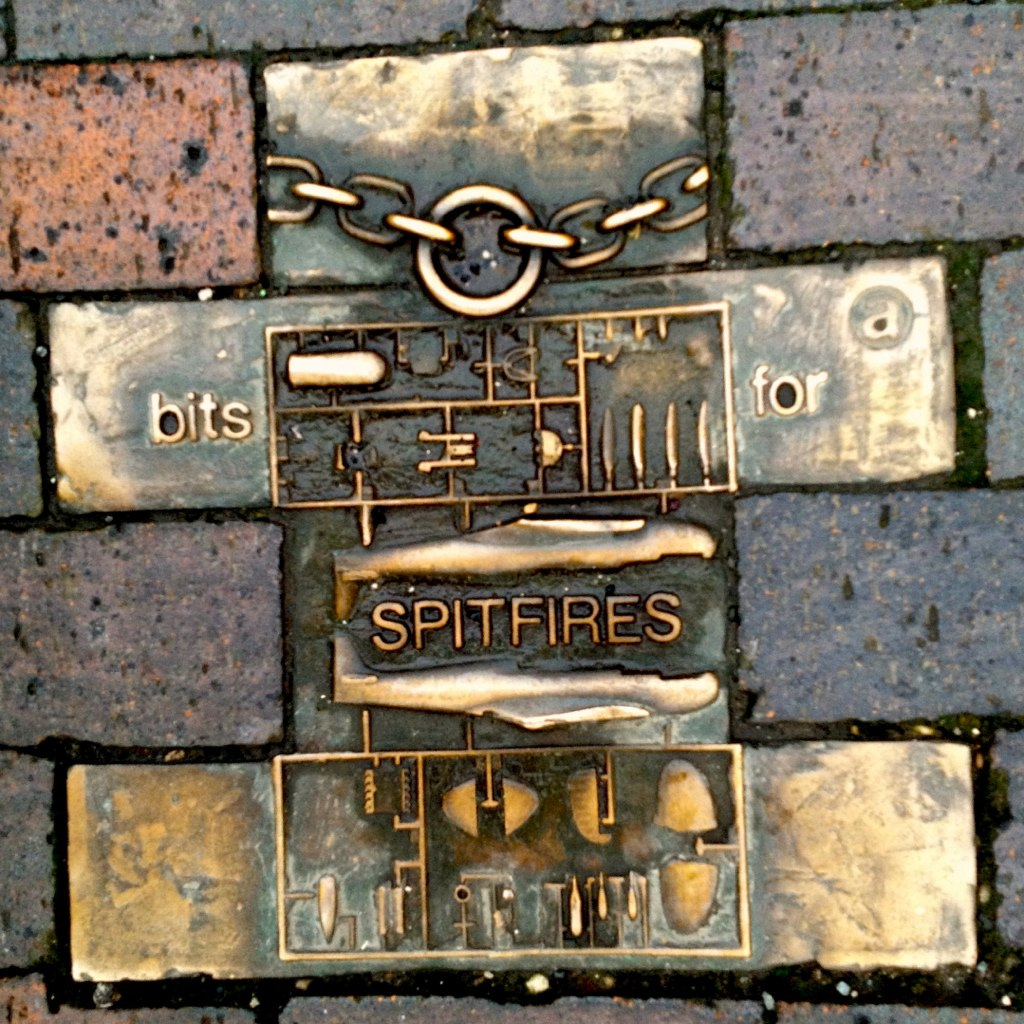
Fattorini’s is another famous name in the Jewellery Quarter. Senor Fattorini was an Italian who set up a number of jeweller’s shops in Yorkshire. Demand for the products was so great that he decided to establish a factory in Birmingham and the business has flourished since.
Among other things, it specialises in ceremonial insignia, swords, medals and trophies. Again this is not jewellery strictly speaking but uses all the skills of the area, including presses to make metal parts for the products.
The building is an example of the larger type of manufactory in the Jewellery Quarter. It’s also another listed building, built about 1895 although Fattorini didn’t move here until 1927.
The railings outside show bomb damage. This is a visual reminder of how the skills of the Jewellery Quarter were put to work in the Second World War. Parts for armaments and Spitfire aircraft were made in the area. Just as in peace time, workers in the Jewellery Quarter could provide very large quantities of precisely-made metal parts for the war effort.
This made the Jewellery Quarter a major target for German bombers. The damage the area suffered led to the great need for post-war redevelopment, the results of which we saw earlier.
Image: Pavement artwork celebratiing the area’s wartime heritage © Bob Hall, Flickr (CCL)
With the Fattorini building on your left, continue along the left side of Frederick Street. After about 75 metres, look across the road for the Pen Museum.
18 Worldwide demand
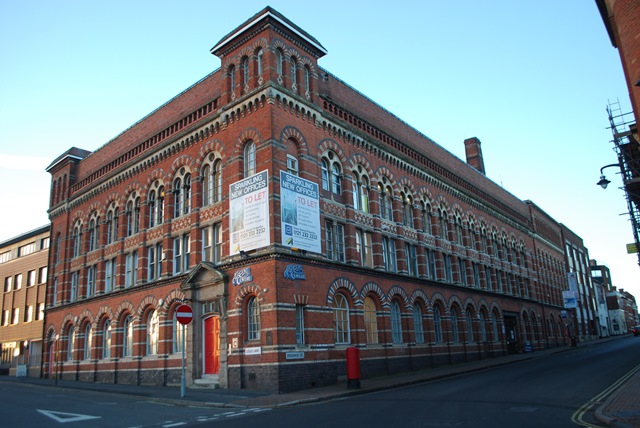
We have now arrived at the best example of the third building type in the Jewellery Quarter - the large, purpose-built manufactory. From a heritage point of view, this is one of the best industrial buildings in Birmingham.
The Argent Works was built in 1862-3 to make pens, but also included Turkish baths reusing steam from the works! There is no doubt that this was a building intended to impress.
The multi-coloured brick detailing, with the corner towers, echoes the style of early renaissance Italian villas in Florence. Behind the frontage it is less grand, with workshops around a central courtyard.
Although the building has gone through a succession of uses, it still celebrates its pen heritage and includes the Pen Room - a museum dedicated to the Birmingham pen industry.
In Victorian times there were dozens of pen makers in Birmingham and the city became the world centre of the pen nib trade. It’s another example of how the Jewellery Quarter has always been about more than jewellery and of the skilled press work that was needed to make a specialised metal product.
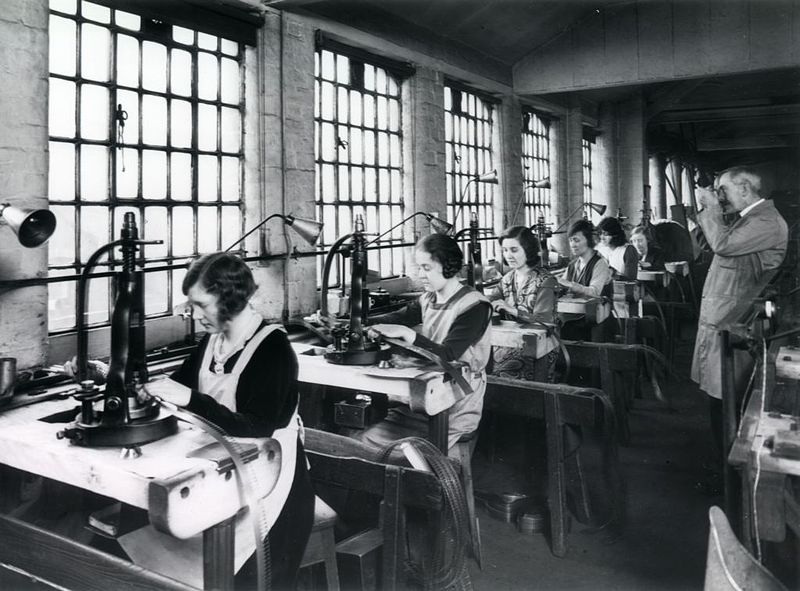
The Argent Centre © Martin Haslett RGS-IBG Discovering Britain
Workers in a Birmingham pen press factory © Birmingham Thinktank via Wikimedia Commons (CCL)
Take the first left into Graham Street and continue until the road bends to the right. Turn left here into Brook Street and stop on the left hand side outside the RBSA Gallery.
19 Artist colony
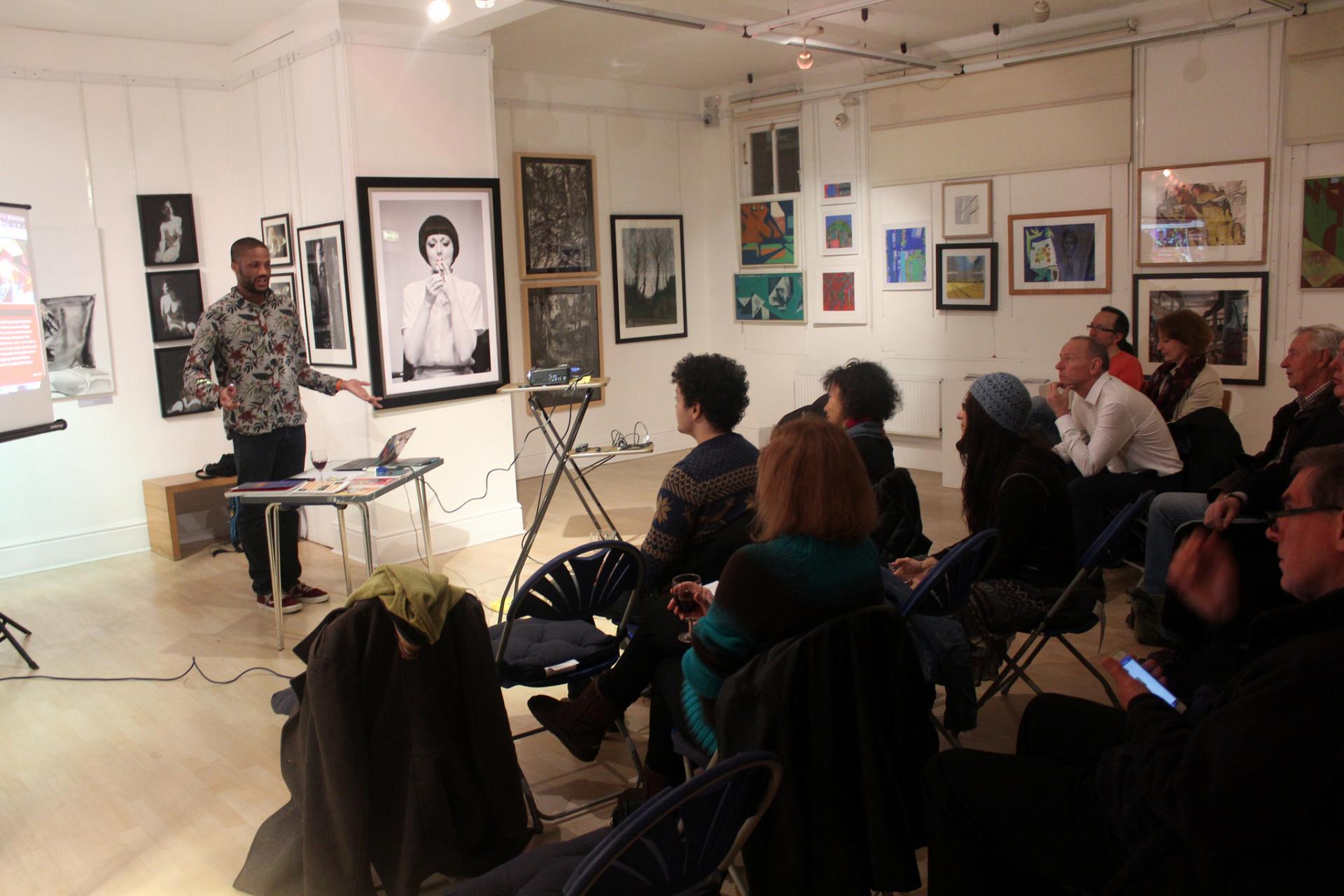
As the Jewellery Quarter has become more fashionable other uses, unrelated to traditional Birmingham metal working, have come into the area. The gallery of the Royal Birmingham Society of Artists is a good example.
The RBSA is a charity that promotes the work of Birmingham artists and the Gallery here has regular exhibitions of their work. Do have a look!
Around the corner in Northwood Street is St Paul’s Gallery, which specialises in a very different type of art. St Paul’s Gallery is the world’s largest retailer of signed limited edition album cover art prints. In nearby Warstone Lane is Turner Fine Arts, an agency specialising in the sale and purchase of original unique artwork on behalf of its artists, clients and private collectors.
You may already have noticed several photographic studios and art shops in the Quarter, all part of the growing popularity of the area as a fashionable place to work, and live. All this activity helps to make this a vibrant area.
On the other hand, too much residential use would pose a threat to the Quarter’s traditional manufacturing base. There is considerable resistance among local people to new residential uses.
Image: A talk on digital art at the RBSA Gallery (Sept 2016) © Antonio Roberts, Flickr (CCL)
Continue along Brook Street to return to St Paul’s Square.
20 The final cut?
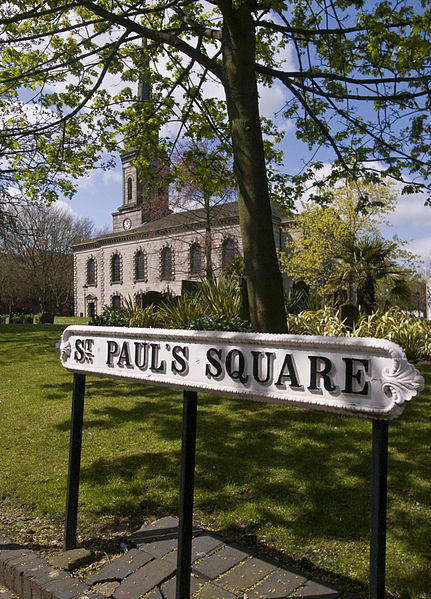
This walk has taken us through a unique area and has given us the chance to understand how it has grown and developed through the years.
We have seen that there has always been much more to the Jewellery Quarter than just jewels. So many of the trades carried out here have one common theme, the production of precision metal parts, often using presses.
Jewellery is just one of the uses for these parts, but the businesses support each other even though their eventual products might be quite different. If a manufacturer needs a metal-working skill not available in one company, they can be sure that some other business in the Quarter will be able to supply what’s needed. This is often why manufacturers find it useful to congregate in an area of similar trades.
In the early 1970s when it seemed that the Jewellery Quarter could disappear and be redeveloped as flatted factories. So much would have been lost. In fact, the area has changed little in the last 40 or so years, and so many places in it have improved.
Today, although there are still decrepit corners to be seen, it now seems much more likely that these buildings will be taken over by a thriving new business rather than fall into ruin or be redeveloped by an ill-considered act of the council’s redevelopment department.
As we have seen on the walk, many of these buildings are now listed. All listed buildings have a written description to explain why they have been designated. Many of these descriptions in the Jewellery Quarter include the following words to describe the area: “a manufacturing district of Birmingham now recognized as being of international significance”.
Now recognised, yes, but only just in time!
Image: St Paul’s Square © Oosoom, Wikimedia Commons (CCL)
Your browser is out of date, and unsupported by this website. Please upgrade to the latest version to use this website.
The jewel in the town
Jewel maker's tools, Museum of the Jewellery Quarter © Martin Haslett RGS-IBG Discovering Britain
Birmingham Jewellery Quarter walk
A walk through the city's unique heritage.
During the Industrial Revolution, Birmingham became the West Midlands’ centre for metal-working. Besides heavy metal goods like cast iron, the town also became famous for fine jewellery.
This walk charts the changing fortunes of Birmingham’s Jewellery Quarter. Originally little-known, even to locals, the Quarter is now a major tourist attraction.
We’ll see how the area developed and survived, and how recent success threatens the Quarter’s future. Most of all this is a chance to walk around a traditional manufacturing district, where skilled workers still ply their trade.
Follow the walk by clicking on the map pins or downloading the guides below
- written guide
Birmingham Jewellery Quarter walk credits
Thanks to -
Martin Haslett for creating the walk and providing photos
Caroline Millar for editing the walk materials
Other images are reproduced under Creative Commons Licenses
- West Midlands
The FA Cup, both Wimbledon Tennis Singles trophies and the 1948 Olympic Torch were all designed and made in Birmingham's Jewellery Quarter
You might also be interested in
Manufacturing and migration.
Discover Birmingham’s industrial and cultural heritage
Why did Birmingham’s canals pay a huge price for a small bridge?
Birmingham Canals
Regenerating the city of a thousand trades
From fossils to fiery furnaces
Discover how Dudley's unique geology fuelled the Industrial Revolution
The crystal canal
Explore how a Stourbridge canal became the home of British glass making
Down the Bumble Hole
Explore the hidden histories of Windmill End in Netherton

Birmingham Jewellery Quarter

Birmingham Jewellery Quarter: Visitor Info

Visitor Information
Situated just outside Birmingham City Centre, the Jewellery Quarter is a historic gem, filled with many specialist, independent shops. You can take a look at our retail listings to track down that perfect piece of jewellery or discover information about the many historic attractions – from the Grade II listed cemeteries to the working Museum of the Jewellery Quarter.
Browse this section of the site to find out more about the opening times of shops in the Jewellery Quarter , how to travel to the Quarter , and local car parking information.

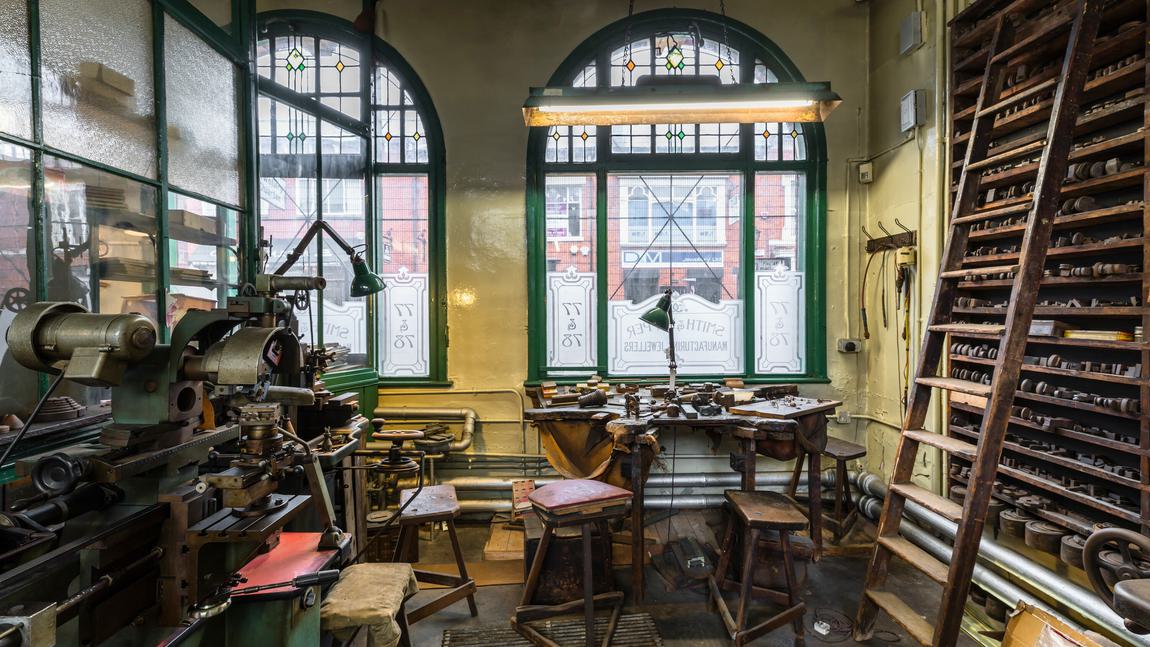
Museum of Jewellery Quarter
The Museum of the Jewellery Quarter is currently closed. It occasionally opens for special events - see the What's On page for details.
Museum of the Jewellery Quarter
Ask anyone in the city what Birmingham is famous for and jewellery-making will be at the top of the list. With a world-wide reputation for the highest quality precious metals and gemstones, the region has for centuries been the go-to place for those looking for the very best treasures.
The Museum of the Jewellery Quarter captures the vital role the industry has played as it shines a spotlight on a perfectly preserved workshop and offers a glimpse of working life in Birmingham’s renowned Jewellery Quarter.
What's on
Sign up to our newsletter.
Join our mailing list to be the first to know about upcoming events.
Just added to your cart

The Mitchel & Co Guide to The Birmingham Jewellery Quarter
Planning a visit to Birmingham’s famous Jewellery Quarter? Well, you are in the right place – as a jeweller based directly in Birmingham’s Jewellery Quarter, we provide expert insider insight into the area.
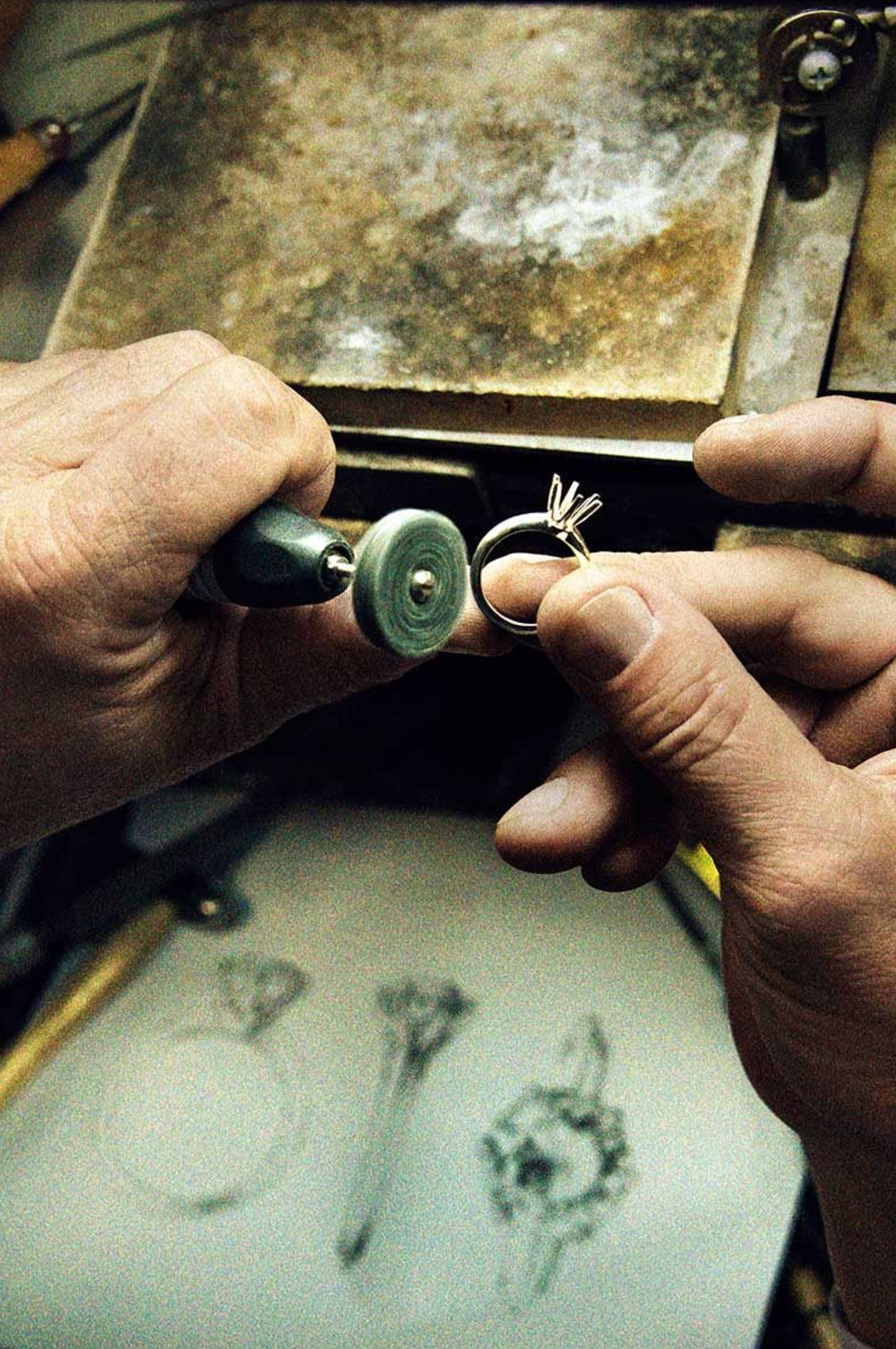
The Jewellery Quarter Birmingham – A History
The Jewellery Quarter in Birmingham is quite unlike any other destination in the UK. The quarter has been described by the English Heritage as a ‘national treasure’ with a ‘particular combination of structures associated with jewellery and metalworking which does not seem to exist anywhere else in the world’. So, taking in some of the architecture is certainly a must! The Jewellery Quarter contains one of Europe’s largest concentrations of manufacturing jewellers and businesses in the jewellery trade, and produces 40% of all jewellery made in the UK. Historically, Birmingham’s Jewellery Quarter shops have been the centre of jewellery production since the 1800s, in which it was home to some of the most skilled craftspeople and the birthplace of many advancements in the jewellery industry. Today, the Jewellery Quarter remains a hub for skilled jewellers and jewellery manufacturers, with over 100 specialist retailers and craftspeople working here who combine traditional craftsmanship with innovative designs and premium materials to create stunning jewellery – often at better prices than anywhere else in the UK. From bespoke designs and wedding rings to watches, gold and silver necklaces and gemstone bracelets to diamond earrings – the Jewellery Quarter inspires some of the most prestigious jewellers in Birmingham and the UK.
Museums & Attractions
The Jewellery Quarter is a conservation area and has over 200 listed buildings to explore, so you cannot shop for jewellery in Birmingham’s Jewellery Quarter without visiting its prestigious landmarks! Learn more about the Quarter’s history and heritage by visiting a few key places of interest: The Museum of the Jewellery Quarter: This museum tells the story of the Jewellery Quarter and Birmingham’s renowned jewellery heritage and offers a unique insight into the working life of the Quarter. Chamberlain Clock: The Clock stands at the heart of the Jewellery Quarter. It is a stunning Edwardian cast-iron clock tower erected in 1903 in remembrance of Joseph Chamberlain. Pen Museum: Located in a former pen factory, the Pen Museum tells the story of how modern pens evolved, and Birmingham’s role at the centre of the pen trade in the 19th century. JW Evans Silver Factory: Established in 1881 and rescued by English Heritage, J. W. Evans is one of the most complete surviving historic factories in Birmingham’s Jewellery Quarter. RBSA Gallery : Ideal for art lovers, this is a gallery space exhibiting exciting new artworks by local artists.
Food & Drink
Whilst shopping for your dream piece of jewellery and delving into the Quarter’s heritage, why not quench your thirst, enjoy some exquisite cuisine, and experience the buzzing nightlife in the many bars and restaurants that Birmingham’s Jewellery Quarter has to offer.
• The Wilderness
• 1000 Trades
• Grain & Glass JQ
• Anna Rocha - Tapas & Cocktails
• The Button Factory
• The Rolling Mill
• Cappadocia - Turkish restaurant
• 40 St. Pauls - Gin Bar
• Cucina Rustica - Italian
• Lasan - Indian Cuisine
• The Jam House
• The Lord Clifden
• Pig & Tail
Mitchel & Co - at the heart of the Jewellery Quarter
We’re one of the only jewellery retailers in the UK who craft their rings in house. We maintain an ethos of fair, honest value, meaning that we cut out the noise, never compromise on quality and charge a fair price for our stunning jewellery.
Want to find out more? Get in touch with our specialists today.
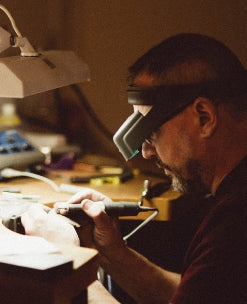
“ "We came to the Jewellery Quarter with the intention of shopping around and this was the first place we went to. We received excellent service and advice from Debbie, making it impossible to buy from anyone else."
Our main priority at Mitchel & Co is finding the right ring for you. Learn more about our Jewellery Quarter jewellers, and how we work to guarantee perfection for our customers.
Dreamt by you
Know exactly what you want? Or looking for inspiration and advice? We have the expertise and the materials available to craft your dream ring.
Limited Edition
Signature range.
Rely on our wealth of experience and choose the perfect ring from our signature range. Each ring is a limited edition, exquisitely designed by Mitchel himself. Shop diamond rings online or in store.
- Choosing a selection results in a full page refresh.
- Press the space key then arrow keys to make a selection.
Book an appointment
We understand that buying a ring can be a little intimidating, but it doesn’t need to be! Arrange a chat with one of our ring specialists, we’re here to answer any questions at your convenience.
Whether you’re looking to choose a ring from our signature collection, or you’re after something bespoke, we’ve got the expertise to meet your needs.
Reserve Item
We'd hate for you to miss out on that perfect item you've been searching for. Reserve this specific item by submitting your details below. A member of our team will be in touch shortly to confirm your reservation.
Keep informed for news and product updates and once-in-a-lifetime deals at Mitchel & Co
By submitting this form I agree with Mitchel & Co’s T&Cs and Privacy policy and how will process my personal data.
Skip To Main Content
Visit Birmingham
- Meet Birmingham
Make It West Midlands
Other Websites
- Family events
- Festivals & Events
- Art & Exhibitions
- Food & Drink events
- Theatre & Performance
- Concerts & Gigs
- Sporting events
- What's on this weekend?
Submit an event
- 100 Days Of Creativity
- Free things to do in Birmingham
- Museums & Galleries
- Culture & Heritage
- Only in Brum
Merlin Entertainments
- Music & Nightlife Venues
- Parks & Countryside
- Food & Drink
- Cycling Tours in Birmingham
- Walking tours in Birmingham
- Special interest
Gamers and experiential seekers
- On a budget
- Thrillseekers
- Peaky Blinders
- Dog friendly
Bottomless brunching
- Splashing out
- Yuup Experiences
Escape the Everyday
- Virtual West Midlands
- Serviced Apartments
- Self Catering
- Caravans and Campsites
- In the region
- VIP city breaks
- Submit an accommodation
Bullring & Grand Central
Mailbox birmingham.
- Jewellery Quarter
- Arcades and Independents
- High street
- Digbeth & Markets
- Resorts World
- McArthurGlen West Midlands
- Restaurants in the Mailbox
- Restaurants in Brindleyplace
Independents
- Adam's Restaurant
- Peel's Restaurant
- Purnell's Restaurant
- Simpsons Restaurant
- Cocktail bars in Birmingham
- Rooftop bars in Birmingham
- Afternoon Tea
- Balti Triangle
- Veggie & Vegan
- Halal Restaurants
Birmingham Blogs
- The Birmingham Balti
- Brindleyplace
- Westside & Broad Street
- Edgbaston Village
- Chinese Quarter
- City Centre
- Colmore Business District
- Gay Village
- The Jewellery Quarter
- The Mailbox
- Stratford-upon-Avon
- Wolverhampton
- England's Waterways
- Competitions and offers
- Accessibility
Download our Visitor Map
- Waterways Map
- West Midlands Travel Trade Guide
- Getting here
- Getting around
- Birmingham Airport
- Car parks & Vehicle hire
- Coaches & Coach parking
- West Midlands Railway Student Offer
West Midlands Railway
- Birmingham's Clean Air Zone
- Travel updates
- The Birmingham Toolkit
- Travel Trade
- Press trips
- Subscribe to our newsletter

- Things to do
- What's on
Your Birmingham
To begin adding to your itinerary planner, simply click the planner button when you see something you like
Already saved a planner?

You are here > Home > Inspire Me > Birmingham Blog > SIX BY NICO ANNOUNCE ‘MEXICO’ INSPIRED MENU
SIX BY NICO ANNOUNCE ‘MEXICO’ INSPIRED MENU
.jpg)
Six by Nico Birmingham will take guests on a summer adventure inspired by Mexico through its signature six course tasting menu from 20th May - 30th June
The Colmore Row based restaurant, Six by Nico, has announced its fifth menu and the second instalment in its ‘Summer Series’, Mexico, will be launching for six weeks from 20th May. The six-course tasting menu will take guests on a summer adventure of food hotspots famed for their unique dishes.
Inspired by the country’s colourful and bold culinary culture, 'Mexico' aims to transport diners from the hazy cactus deserts of Tijuana to the vibrant, bustling streets of Mexico City with each course. This six-course tasting menu, rich in colour and flavour combines elements of both contemporary Mexican street food and ancient culinary classics to provide guests with a taste of the country’s flavourful history.
For 4 days, Chef Nico Simeone and his team explored the depths and local suburbs of Mexico City to serve as inspiration for the upcoming menu. Hosted by a local tour guide, the team were able to discover new places to visit, barely visible to the novice traveller, learning new techniques and ways of cooking, which they have been able to take from years of tradition and incorporate these into their new tasting menu.
For £42, guests will be able to enjoy a taste of Mexico through dishes such as Tostada - Prawn, Cucumber & Shallot, Crème Fraiche, Burnt Cucumber & Guacamole, Elote - Sweetcorn Fritter, Queso Fresco & Salsa Verde, Barbecoa - Calcot Onions, Roasted Garlic Emulsion, Smoked Ketchup, Smoked Almond Pesto & Pork Crackling, Caldo de Pescado - Sea Bass, White Bean & Chorizo Spiced Hot Broth, Mole - Slow Cooked Chicken Leg Roulade, Crispy Tamales, Serrano Pepper Mayonnaise & Tomato Mole with the option to add on Fried Nachos with Chicken , Queso Blanco, Tomatillo & Chilli Salsa, and for dessert the Pastel Roldan Tres Leches - Pecan Cake, Horchata, Vanilla Tres Leches Sorbet & Citrus.
Founder of Six by Nico and Chef, Nico Simeone, said, “The team and I had an incredible time exploring the streets of Mexico City as part of our research for the new menu. One of the highlights of the trip was meeting Chef Mendoza who showed us his actual family recipes from his father’s notebooks, helping us note the authenticity in traditions that were abundant in creating flavour. We understand that some techniques we simply cannot recreate due to access to authentic ingredients but where possible, and where we can do the dish justice, we have ensured authenticity is used throughout the menu. We can’t wait to bring a piece of the Mexican sunshine to the city of Birmingham!” The Mexico six-course menu will be available at Six by Nico Birmingham between Monday 19th May and Sunday 30th June. Bookings are now open via https://www.sixbynico.co.uk/birmingham/booking/ . Follow @sixbynico_birmingham on Instagram for more information and to stay up to date with future announcements.
Comments are disabled for this post.
- Attractions (372)
- Birmingham 2022 (5)
- Birmingham 2022 Commonwealth Games (33)
- Blogs (172)
- By train (8)
- Christmas (63)
- Events (611)
- Food & Drink (303)
- Health & Wellbeing (1)
- History (14)
- Hotels (69)
- Parks & Countryside (4)
- Press & Media (1111)
- Shopping (39)
- Theatre & Performance (97)
- Travel (17)
- your brum (5)
Recent Posts
- May 2024 (18)
- Apr 2024 (32)
- Mar 2024 (47)
- Feb 2024 (14)
- Jan 2024 (17)
- Dec 2023 (13)
- Nov 2023 (26)
- Oct 2023 (30)
- Sept 2023 (32)
- Aug 2023 (29)
- July 2023 (31)
- June 2023 (26)
- Make it West Midlands
- Family events ,
- Festivals & Events ,
- Art & Exhibitions ,
- Food & Drink events ,
- Theatre & Performance ,
- Concerts & Gigs ,
- Sporting events ,
- NEC events ,
- What's on this weekend? ,
- Submit an event ,
- Attractions ,
- Entertainment ,
- Activities ,
- Tours & Sightseeing ,
- Recommended for... ,
- Submit an accommodation ,
- Serviced Apartments ,
- Self Catering ,
- For groups ,
- In the region ,
- Bullring & Grand Central ,
- Mailbox Birmingham ,
- Jewellery Quarter ,
- Arcades and Independents ,
- High street ,
- Digbeth & Markets ,
- Resorts World ,
- Restaurants ,
- Independents ,
- Pubs & Bars ,
- Afternoon Tea ,
- Balti Triangle ,
- Veggie & Vegan ,
- Halal Restaurants ,
- Competitions and offers ,
- Birmingham Blogs ,
- Areas of Birmingham ,
- England's Waterways ,
- Only Here ,
- Accessibility ,
- Maps, brochures & guides ,
- The Birmingham Toolkit ,
- Travel Trade ,
- Subscribe to our newsletter ,
- Press trips ,
- Accessibility Statement
- Data Protection Policy
- Terms and Conditions
Ratings Powered By

© West Midlands Growth Company

Don't miss

100 Days of Creativity

What’s on this May Half Term in Birmingham and the West Midlands

Birmingham Pride

Black Country Living Museum

The Custard Factory

Attractions in Birmingham & the region

English Tourism Week

Arden Hotel & Leisure Club

Selfridges & Co

Splashing out in the Mailbox

Pubs & Bars in Birmingham

Restaurants in Birmingham

Instagrammable Restaurants

Explore the West Midlands

Latest news

London Northwestern Railway

The 12 bars and restaurants for sale across Birmingham in 2024, including in Harborne & Jewellery Quarter
We’ve put together a list of bars and restaurants in Birmingham that are up for sale as of May 2024
A number of bars and restaurants in Birmingham are currently on the market, so we've put together a list of the ones that are available now.
Fancy running a bar or raking over a restaurant in the city? Well, look no further. Birmingham is renowened for its independent food scene and there a a variety of new hospitality venues looking to be taken over.
All eight of these Birmingham businesses have been listed on Zoopla, as seen below. For full details on each property, visit the Zoopla website.
Take a look through the gallery below to view them.


IMAGES
COMMENTS
The Jewellery Quarter is accessible from the city centre via the following routes - 8A, 8C and 101 (stops closest to Warstone Lane) also the 16, 74 buses (stops on Great Hampton Street). Visit the National Express West Midlands website for up-to- date timetables. Please note that city centre bus stops may be disrupted from April to Autumn ...
The home of British jewellery with a growing arts scene and plenty of great restaurants and bars. Home to more diamond rings, finishing touches and tokens of love than anywhere else in the country, this is the beating heart of the nation's jewellery manufacturing. An estimated 40% of British jewellery is made in Birmingham's unique Jewellery Quarter.
The top things to do in the Jewellery Quarter, Birmingham. ... Visit the museum of the workshops that made coffin furniture for Winston Churchill and the Queen Mother at Newman Brothers Coffin Works.
It's the everyman pub, where bearded hipsters and Villa-loving families can harmoniously glide along together. The Clifden resides in the Jewellery Quarter and hires local DJs to their warm abode in winter and their leafy beer garden, decked in lights, during the summer. 3. Get a proper eyeful of colour.
Jewellery Quarter. The Jewellery Quarter is one of the oldest districts in Birmingham. Around a 15minute walk from the city centre and well connected with trains, trams and buses. The area has a reputation of high quality, bespoke Jewellery but is home to countless independent restaurants, bars and cafes. The Quarter is home to over 200 listed ...
You can visit the Jewellery Quarter by train, tram, bus and car. he Jewellery Quarter train station is situated on Vyse ... With a £1.50 city hop you can arrive at the Jewellery Quarter from central Birmingham in just 7 minutes. he Jewellery Quarter is also accessible via a number of bus routes, including the 8A, 8C, 101, 16 and 74 buses. ...
The Jewellery Quarter is steeped in heritage and teaming with both traditional and modern independent businesses. Situated only a short 20 min walk from Birmingham City Centre this unique neighbourhood has a village atmosphere and offers the chance to explore Birmingham's history, learn a new skill, and enjoy award-winning cafes and restaurants.
The Museum of the Jewellery Quarter captures the vital role the industry has played as it shines a spotlight on a perfectly preserved workshop and offers a glimpse of working life in Birmingham's renowned Jewellery Quarter. When the proprietors of the Smith & Pepper jewellery manufacturing firm retired in 1981 they simply ceased trading and ...
For over 200 years Birmingham's Jewellery Quarter has been the home of some of the worlds most highly skilled goldsmiths and jewellery makers. The advent of shops opening to the public is a recent phenomenon, with the majority of retail outlets springing up since the 1970's. And now the area is widely known as a place for both the trade and ...
About Birmingham's Hidden Gem: The Jewellery Quarter. Described as a national treasure, the Birmingham Jewellery Quarter is a historic and vibrant area in Birmingham with a rich and diverse history.. The Jewellery Quarter's history with industrialism goas as far back as the early 16th century, with Roger Pemberton establishing one of the first (of many ) jewellery shops in the city.
The Jewellery Quarter is an area of central Birmingham, England, in the north-western area of Birmingham City Centre, with a population of 19,000 in a 1.07-square-kilometre (264-acre) area.. The Jewellery Quarter is Europe's largest concentration of businesses involved in the jewellery trade and produces 40% of all the jewellery made in the UK. It is also home to the world's largest Assay ...
Affinity & Co - Permanent Jewellery. Birmingham-based welded jewellery studio, supplying you with permanent/welded bracelets, anklets and. Jewellery Quarter Birmingham. Closed Now! Save. Preview.
At 75-79 Vyse Street, The Museum of the Jewellery Quarter is one of the nine museums run by Birmingham Museums Trust. It is currently closed for restoration work and roof repairs - we'll keep you updated for its reopening. Among the museum's many fascinating attractions is the Smith & Pepper workshops. When the proprietors of the Smith ...
Experience the energy and heritage of Birmingham's Jewellery Quarter with our FREE annual Summer Festival. Enjoy live music and performance, independent makers markets, demonstrations, arts and heritage tours and delicious street food and drinks. Music festival in St. Paul's Square, loads of activities including tours, crafts and theatre in the ...
The Jewellery Quarter railway station was opened in 1995, as part of the 'Jewellery Line' project. This was followed in 1999 by a new a tram service between Wolverhampton and Birmingham. The Jewellery Quarter is an important employment area, not just for jewellery manufacture and sale but for a wide variety of other work.
Address Museum of the Jewellery Quarter 70-80 Vyse Street Hockley Birmingham B18 6HA. ... Address Museum of the Jewellery Quarter 70-80 Vyse Street Hockley Birmingham B18 6HA. Skip to main content. ... We want to make sure your visit is as safe and enjoyable as possible so some safety measures will continue:
Visitor Information. Situated just outside Birmingham City Centre, the Jewellery Quarter is a historic gem, filled with many specialist, independent shops. You can take a look at our retail listings to track down that perfect piece of jewellery or discover information about the many historic attractions - from the Grade II listed cemeteries to the working Museum of the Jewellery Quarter.
Full of history, culture and craftsmanship, the Quarter's independent business owners are sure to provide spaces where people love to live, work, shop and visit for years to come. Birmingham's famous Jewellery Quarter is celebrated as the birthplace of the original FA Cup, lauded as a prime filming location (see BBC's "Hustle" and ...
Contact Details. Birmingham Museums Trust, Chamberlain Square, Birmingham, B3 3DH. [email protected]. Small Print. Registered Charity 1147014. Website by Supercool. Facebook. Twitter. Museum of the Jewellery Quarter Ask anyone in the city what Birmingham is famous for and jewellery-making will be at the top of the list. With a ...
The Jewellery Quarter contains one of Europe's largest concentrations of manufacturing jewellers and businesses in the jewellery trade, and produces 40% of all jewellery made in the UK. Historically, Birmingham's Jewellery Quarter shops have been the centre of jewellery production since the 1800s, in which it was home to some of the most ...
Six by Nico Birmingham will take guests on a summer adventure inspired by Mexico through its signature six course tasting menu from 20th May - 30th June. The Colmore Row based restaurant, Six by Nico, has announced its fifth menu and the second instalment in its 'Summer Series', Mexico, will be launching for six weeks from 20th May.
Birmingham is renowened for its independent food scene and there a a variety of new hospitality venues looking to be taken over. ... visit the Zoopla ... including in Harborne & Jewellery Quarter ...